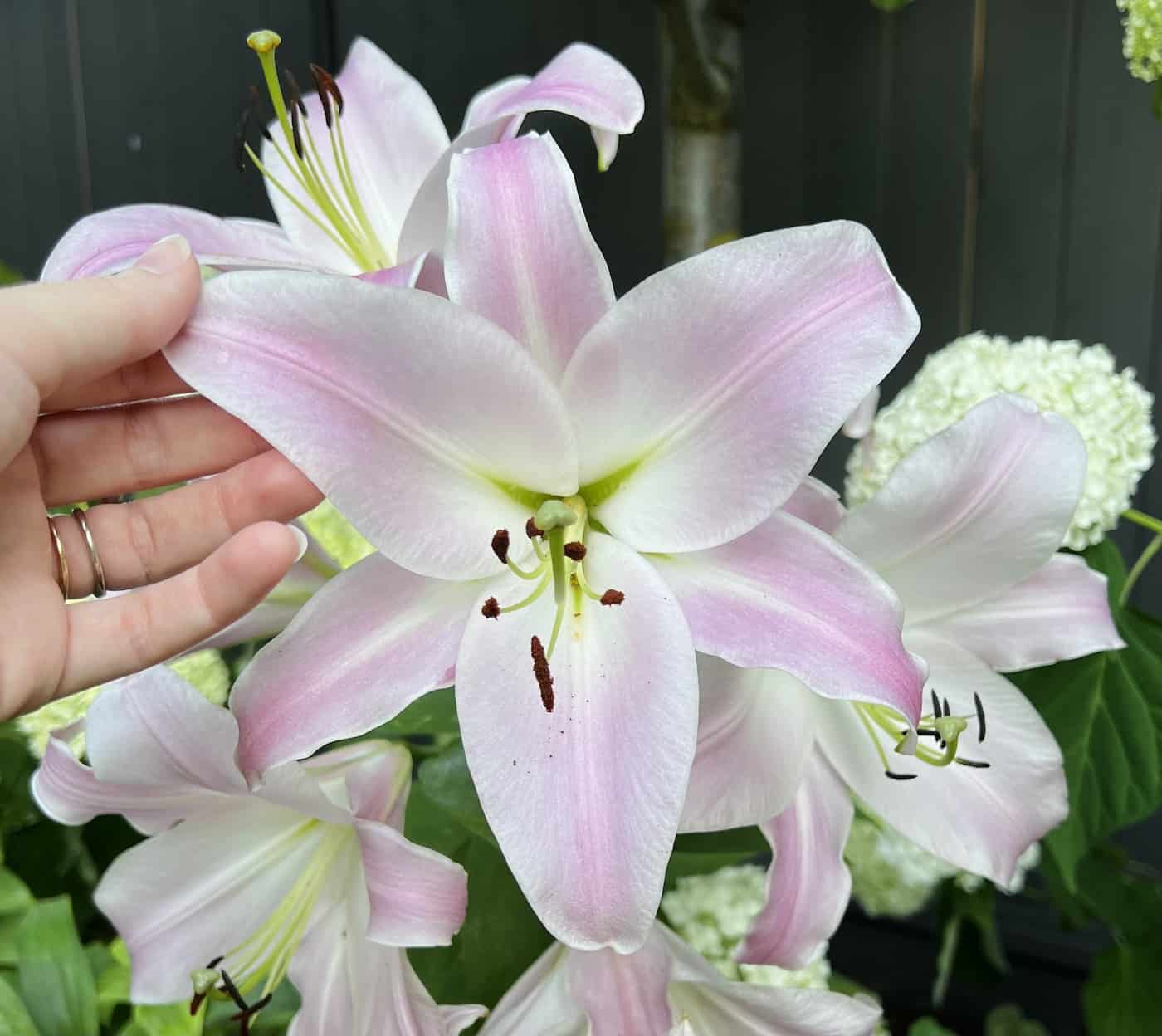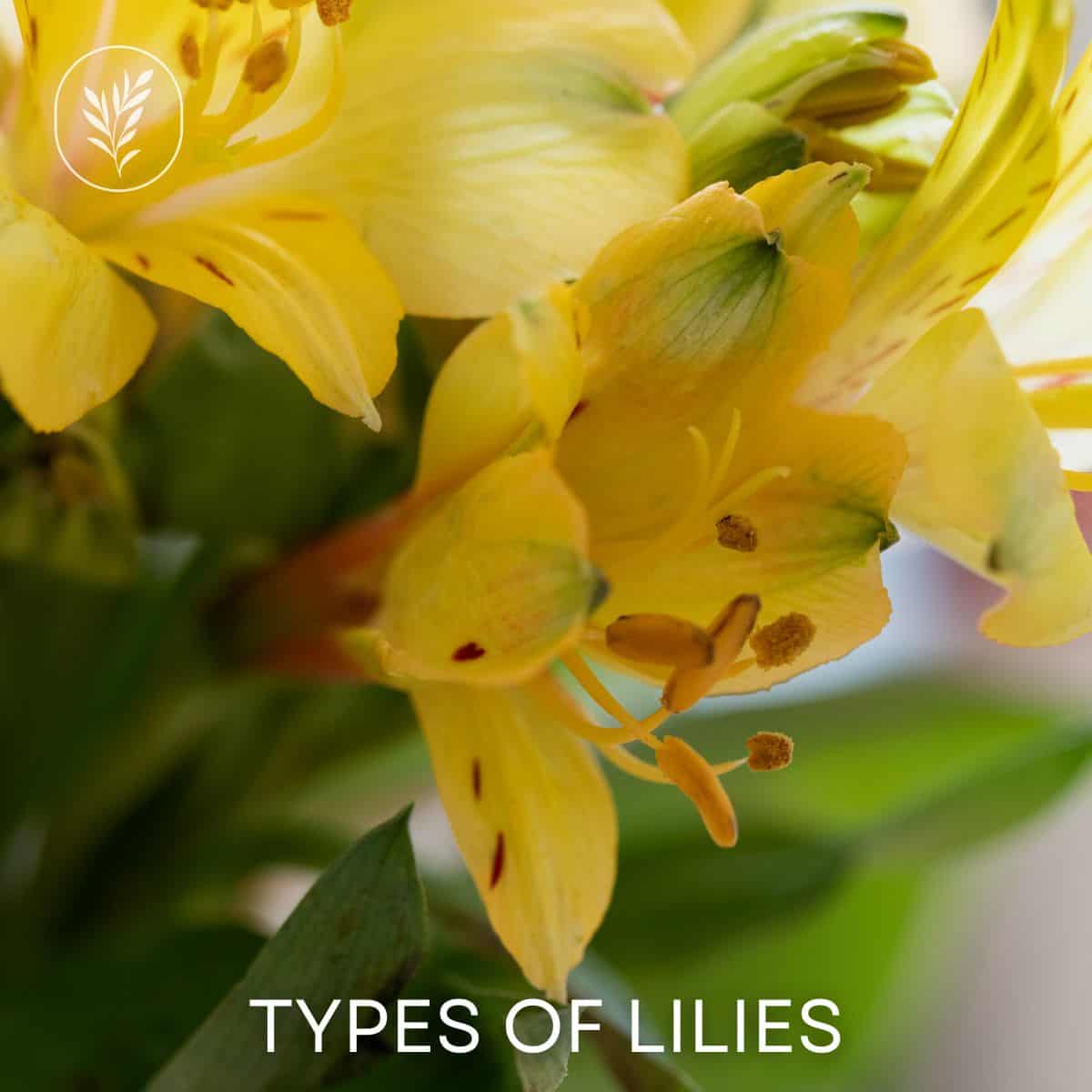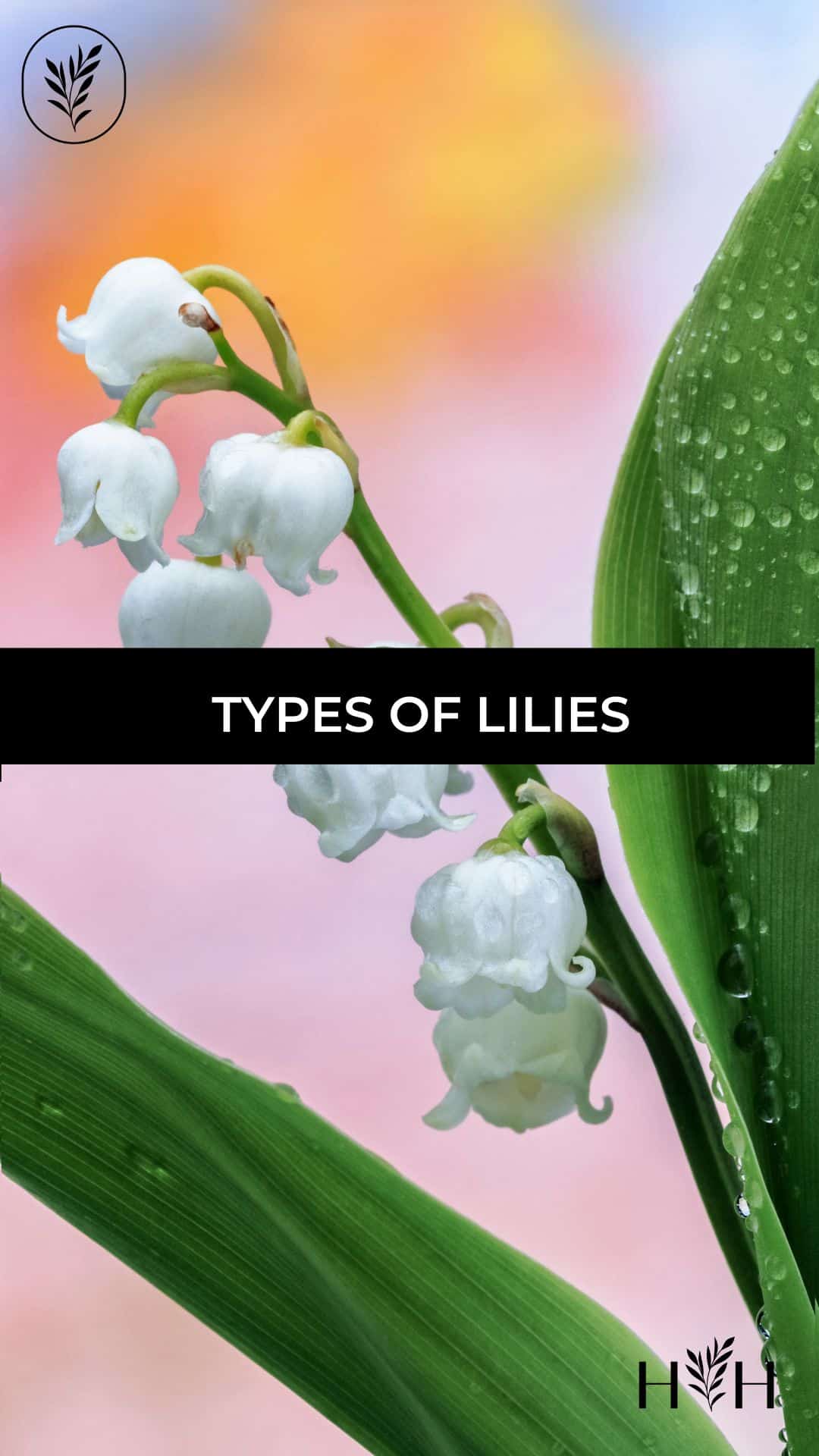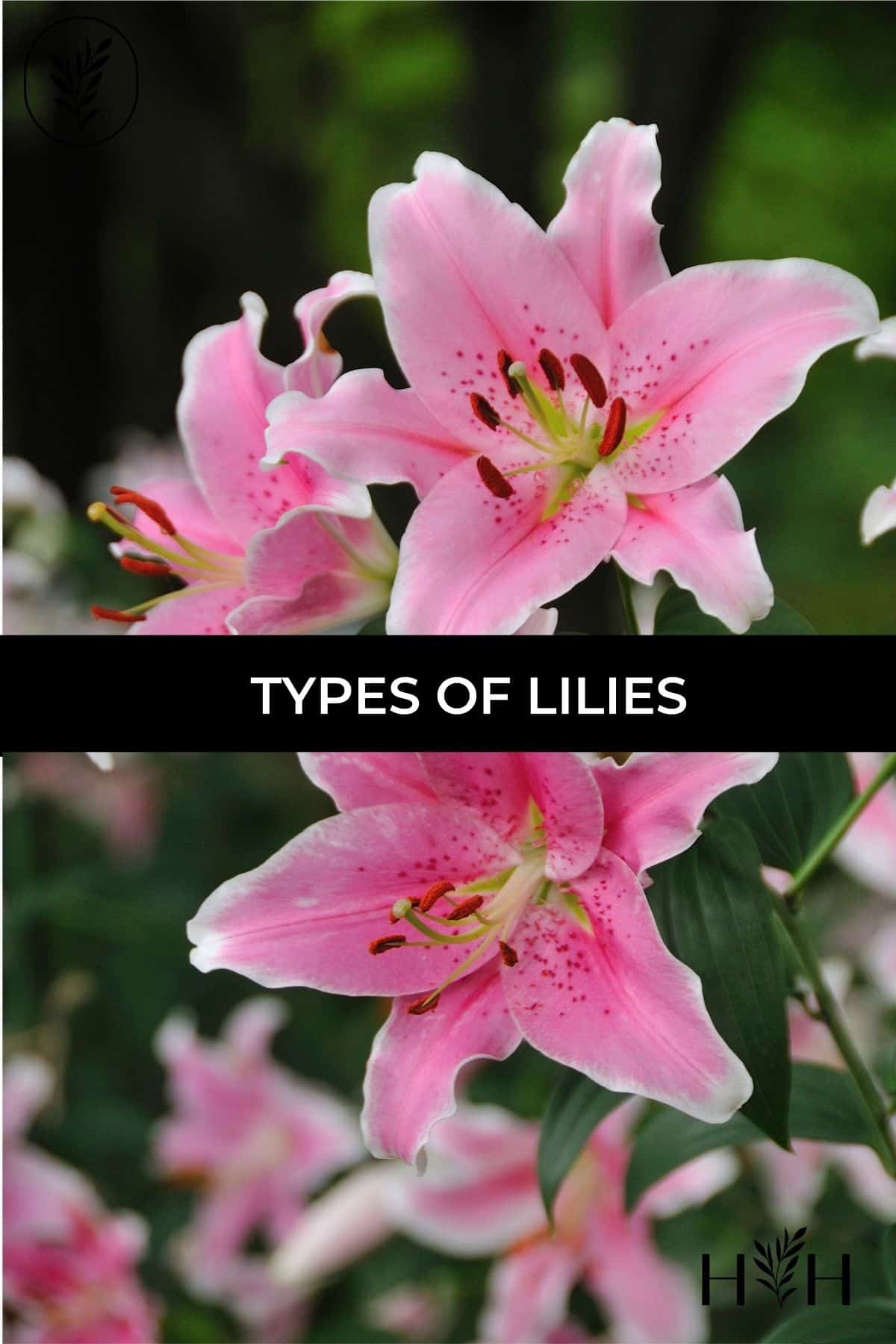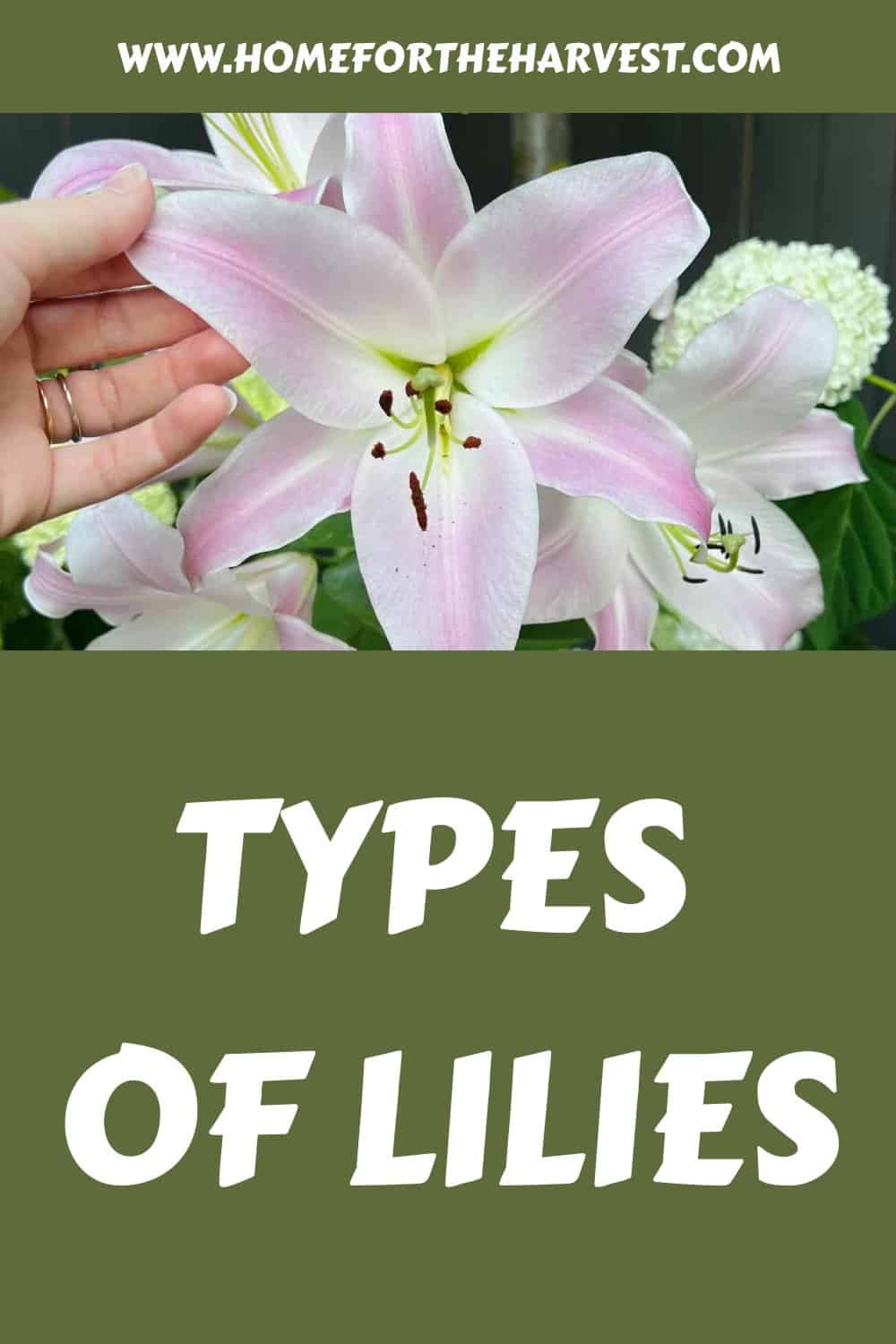The most popular types of lilies are Asiatic lilies, Oriental lilies, Easter lilies, trumpet lilies, and tiger lilies. There are 115 accepted species of lilies in the botanical genus Lilium and countless hybrids created by crossing species. Regarding floral classification, lilies are generally grouped into one of nine horticultural divisions.
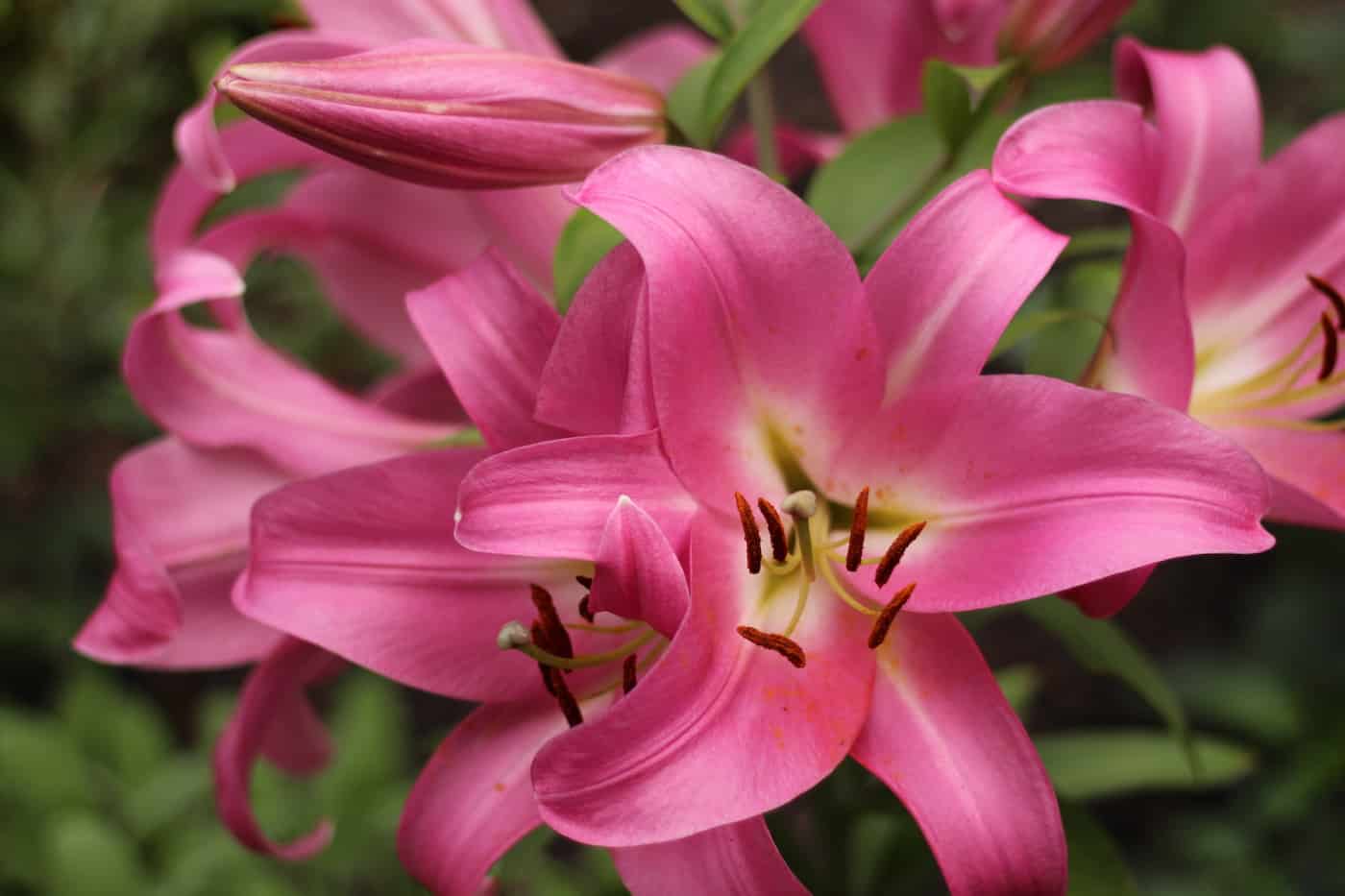
1. Asiatic lilies
Asiatic lilies are among the most popular lilies to grow, with a wide variety of colors and sizes available. These beautiful flowers come in shades ranging from white to pink to yellow and even deep reds, making them perfect for any garden or flower bed. They also have a long bloom time, lasting up to 8 weeks in some cases. Asiatic lilies are easy to grow and require minimal maintenance, making them a great choice for beginner gardeners.
When planting Asiatic lilies, it is important to choose an area that gets plenty of sunlight but is not too hot or dry. The soil should be well-draining and amended with compost before planting. Planting bulbs about 6 inches apart will ensure they get enough space for proper growth. Water your newly planted bulbs thoroughly after planting, and then water regularly throughout the growing season as needed (about once per week).
Fertilizing your lily plants can help promote healthy growth and blooms each year. Use a balanced fertilizer during the growing season, starting when new leaves emerge from the ground to mid-summer when buds begin forming on the stems. Be sure not to over-fertilize, as this can cause foliage burn or damage delicate root systems.
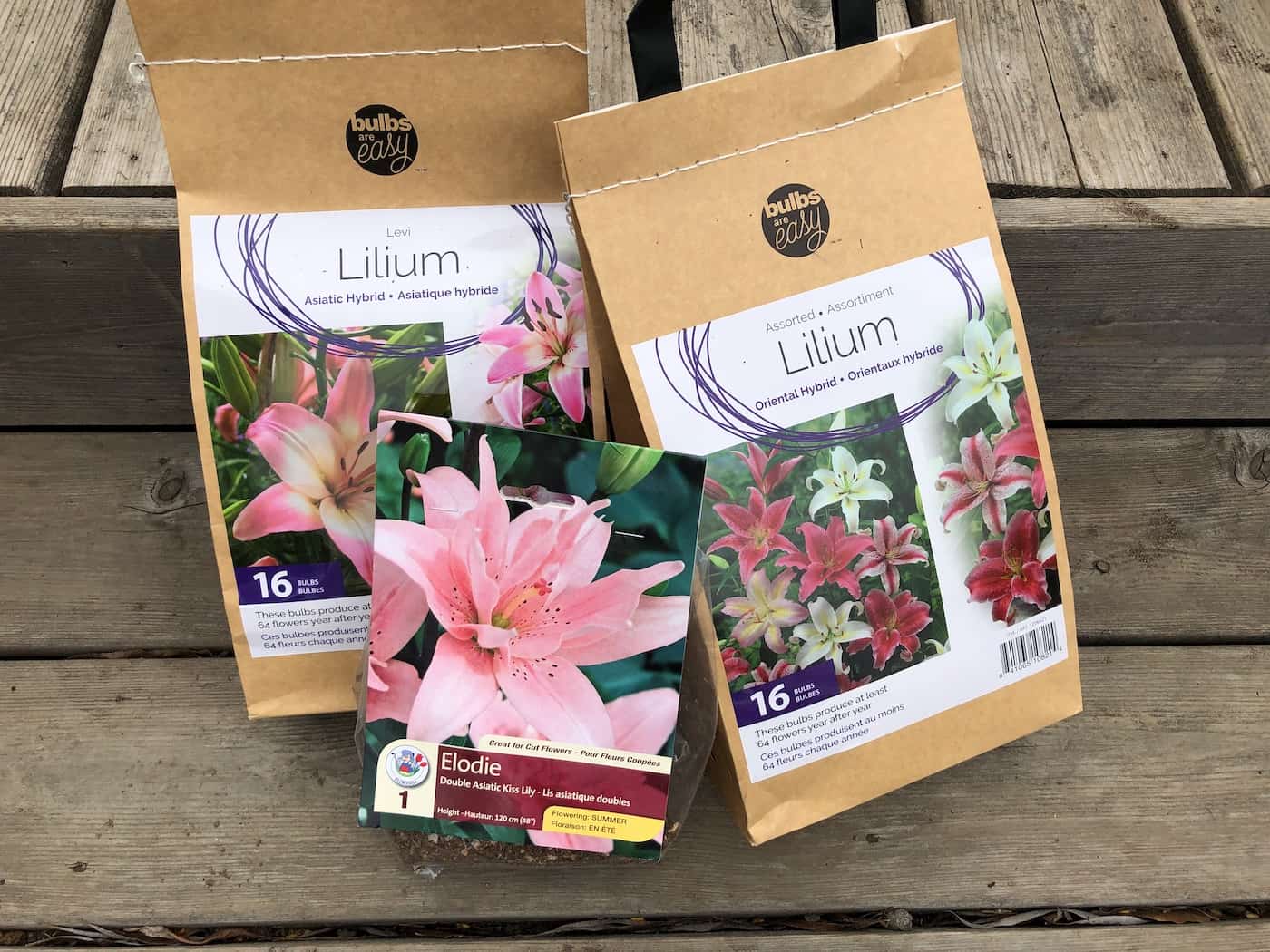
Deadheading spent blooms helps encourage more flowers later in the season while also keeping your plants looking tidy all summer long. Just remove any wilted or faded blossoms by cutting off just below where they attach at their base near the stem using sharp pruning shears or scissors. After flowering, it’s best practice to leave your plants alone until fall, when you can prepare them for winter dormancy.
Finally, dividing clumps of Asiatic Lilies every 3-4 years will help keep them healthy and productive so that you can continue to enjoy those gorgeous blooms year after year. To do this, carefully dig up the entire clump being careful not to disturb the root system too much. Then divide into smaller sections using a shovel handle or knife and replant immediately afterward, giving each section adequate spacing. Water thoroughly right away, then follow your normal care routine going forward.
Asiatic lilies are hybrids derived from the following species and inter-species hybrids: amabile, bulbiferum, callosum, cernuum, concolor, dauricum, davidii, L. × elegans, L. × hollandicum, lancifolium, lankongense, leichtlinii, maculatum, pumilum, L. × scottiae, wardii, and wilsonii (source: RHS).
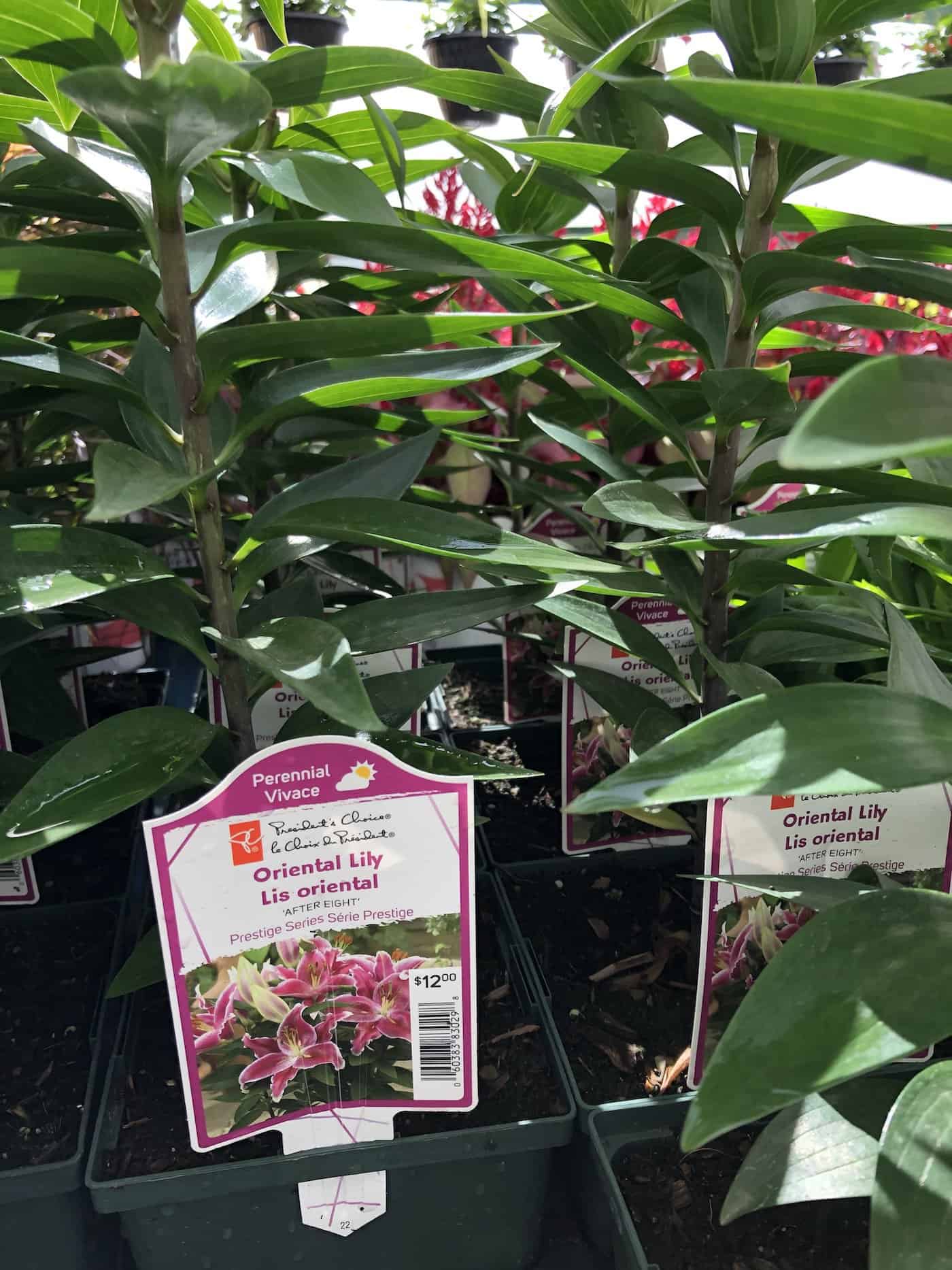
2. Oriental lilies
Oriental lilies are another beautiful addition to any garden. With their large, fragrant blooms in colors ranging from white and pink to yellow, orange, and red, they’re sure to bring beauty and life into your outdoor space. While these lilies require a bit more maintenance than Asiatic lilies, the effort is worth it for the stunning results.
When planting Oriental lilies in your garden or flower bed, make sure you choose an area with plenty of sun exposure. These flowers need at least six hours of direct sunlight each day in order to thrive. They also prefer soil that is well-draining but moist—so if you have clay soil or areas prone to standing water after rainstorms, consider adding some compost or other organic matter before planting your Oriental lily bulbs.
Once planted correctly and given enough light and water throughout the growing season (about 1 inch per week), Oriental lilies will reward you with gorgeous blooms come summertime. Depending on the variety you choose, these blossoms can reach up to 8 inches across.
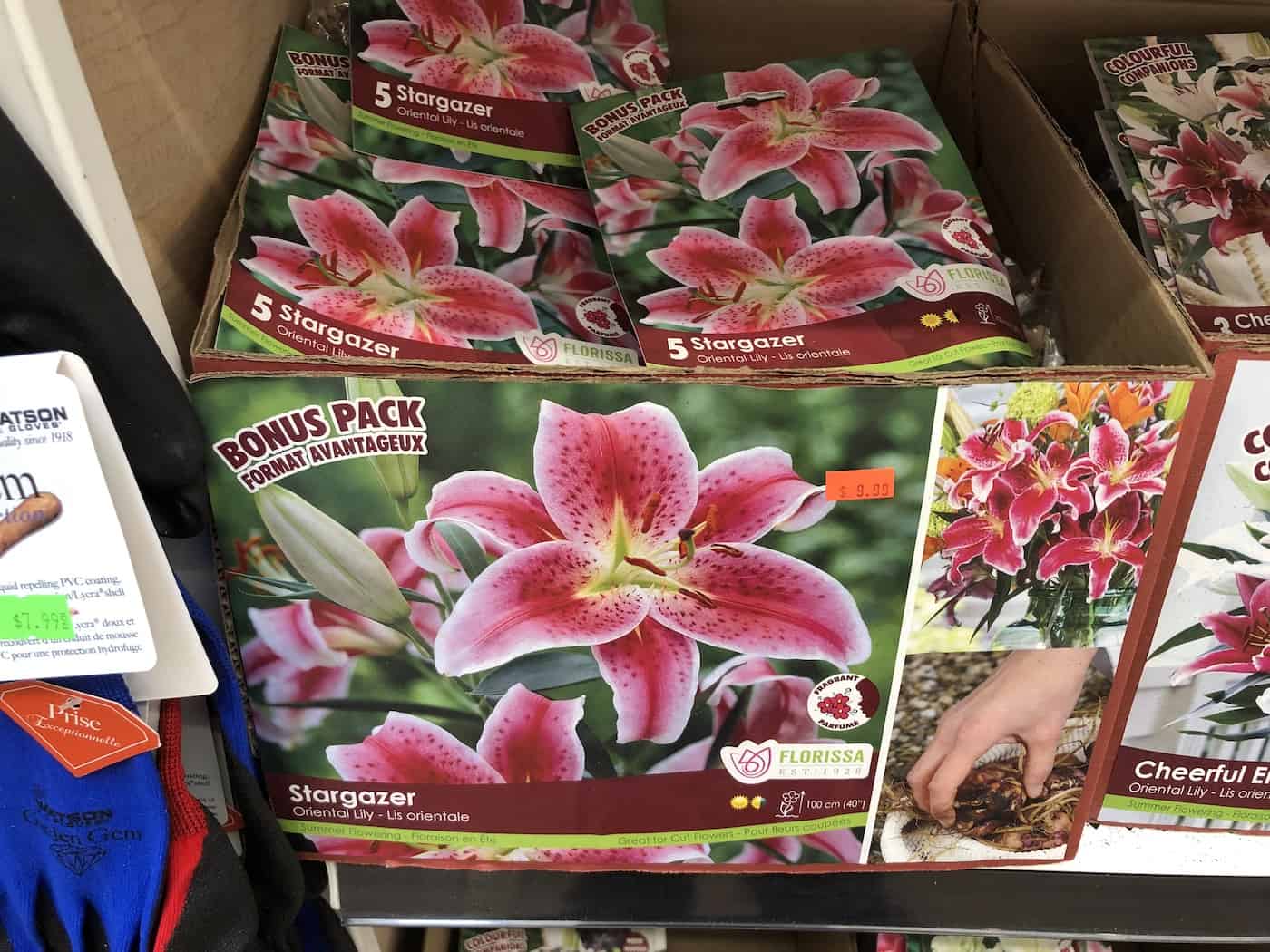
When caring for Oriental Lilies during bloom time, be aware that they may need staking due to their height; some varieties can grow as tall as 5+ feet. You should also deadhead spent blooms regularly so new buds can form. This will help ensure a longer flowering period for your plants. Finally, keep an eye out for aphids that love feasting on young shoots. If spotted, treat them quickly with insecticidal soap or neem oil spray before they spread too far around your garden beds.
While requiring more care than Asiatic Lilies, Oriental Lilies are worth it when considering their size and fragrance, along with the vibrant colors available in many different varieties. This makes them an ideal choice for those looking to add a touch of elegance and beauty to their gardens this summer season.
Oriental lilies are hybrids derived from the following species and interspecific hybrids: auratum, japonicum, nobilissimum, L. × parkmanii, rubellum, and speciosum (excluding any hybrids with henryi).
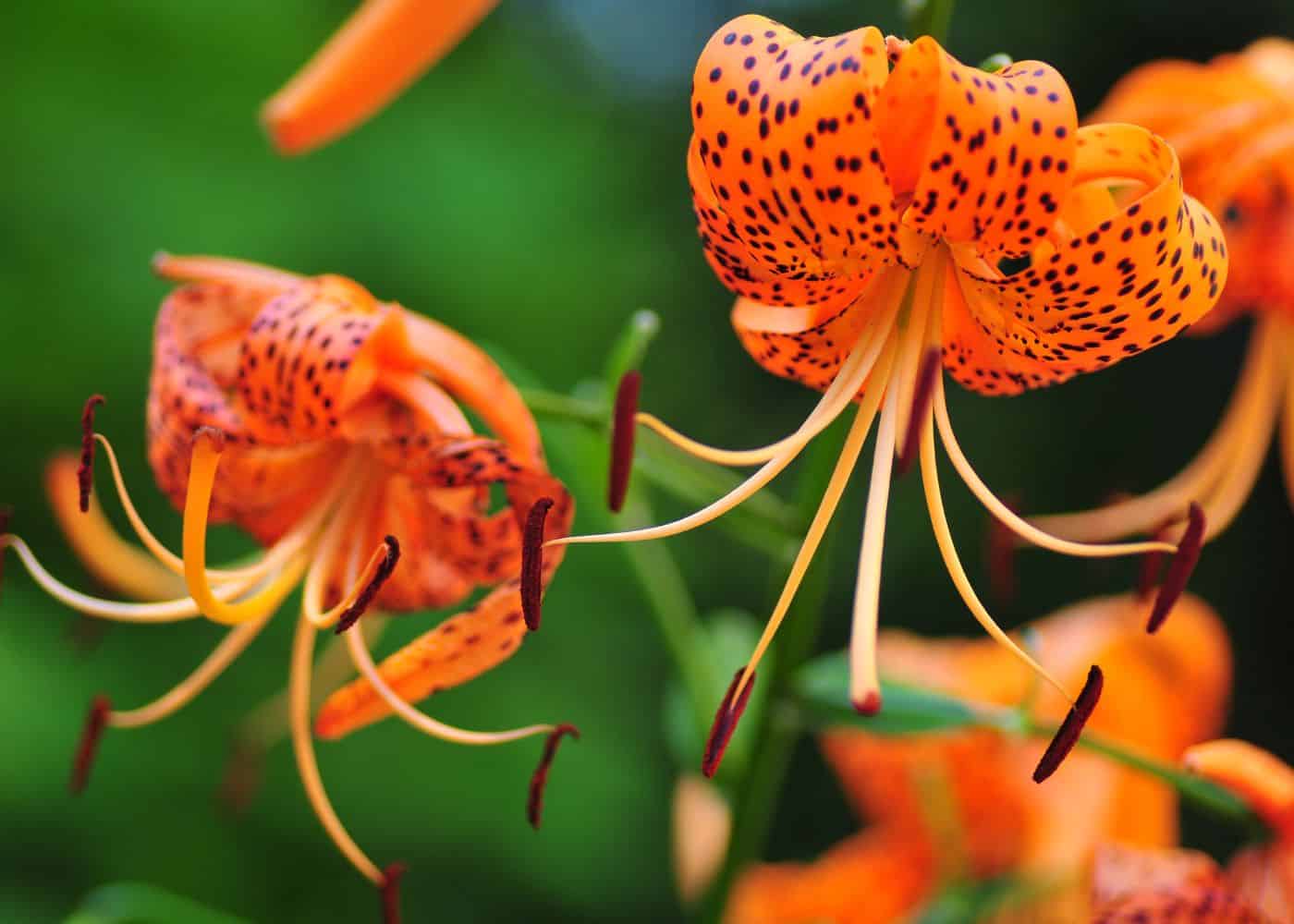
3. Tiger lilies
Tiger lilies are stunning and vibrant flowers that can add beauty to any garden. These flowers come in several warm color tones, generally from bright orange to deep red. Tiger lilies have long stems with large blooms at the top, making them perfect for adding height and drama to your garden.
When it comes to planting tiger lilies, they prefer full sun or partial shade and moist soil. They also need plenty of space between plants as their roots spread quickly when planted together. When planting tiger lilies, make sure you dig a hole twice as wide as the root ball so that there is enough room for the roots to expand without being cramped. Water regularly after planting and mulch around the base of each plant for extra protection against weeds and pests.
Tiger lilies require minimal maintenance once established in your garden; however, they benefit from regular deadheading (removing spent flowers), encouraging more blooms throughout the season. Additionally, fertilizing every two weeks during active growth periods will help keep these beautiful flowers healthy and happy.
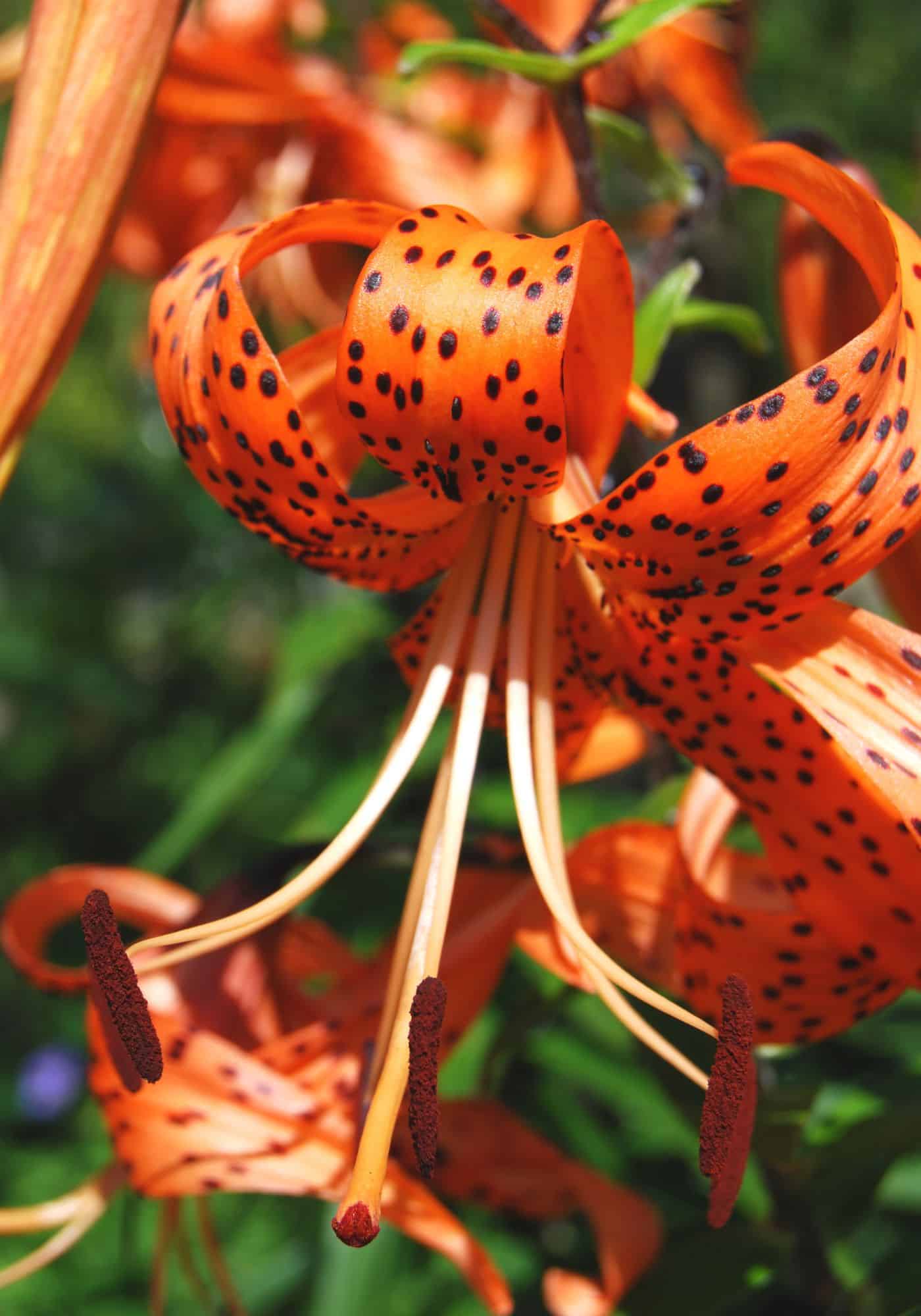
These hardy perennials are not only attractive but easy to care for as well. With proper care, you can enjoy their beauty year after year in your garden beds or containers; just be sure not to overcrowd them since this can lead to disease problems down the road.
The botanical species of the tiger lily is Lilium lancifolium. There are many specific cultivars of tiger lily (Lilium lancifolium), and many Asiatic lily cultivars have some tiger lily parentage.
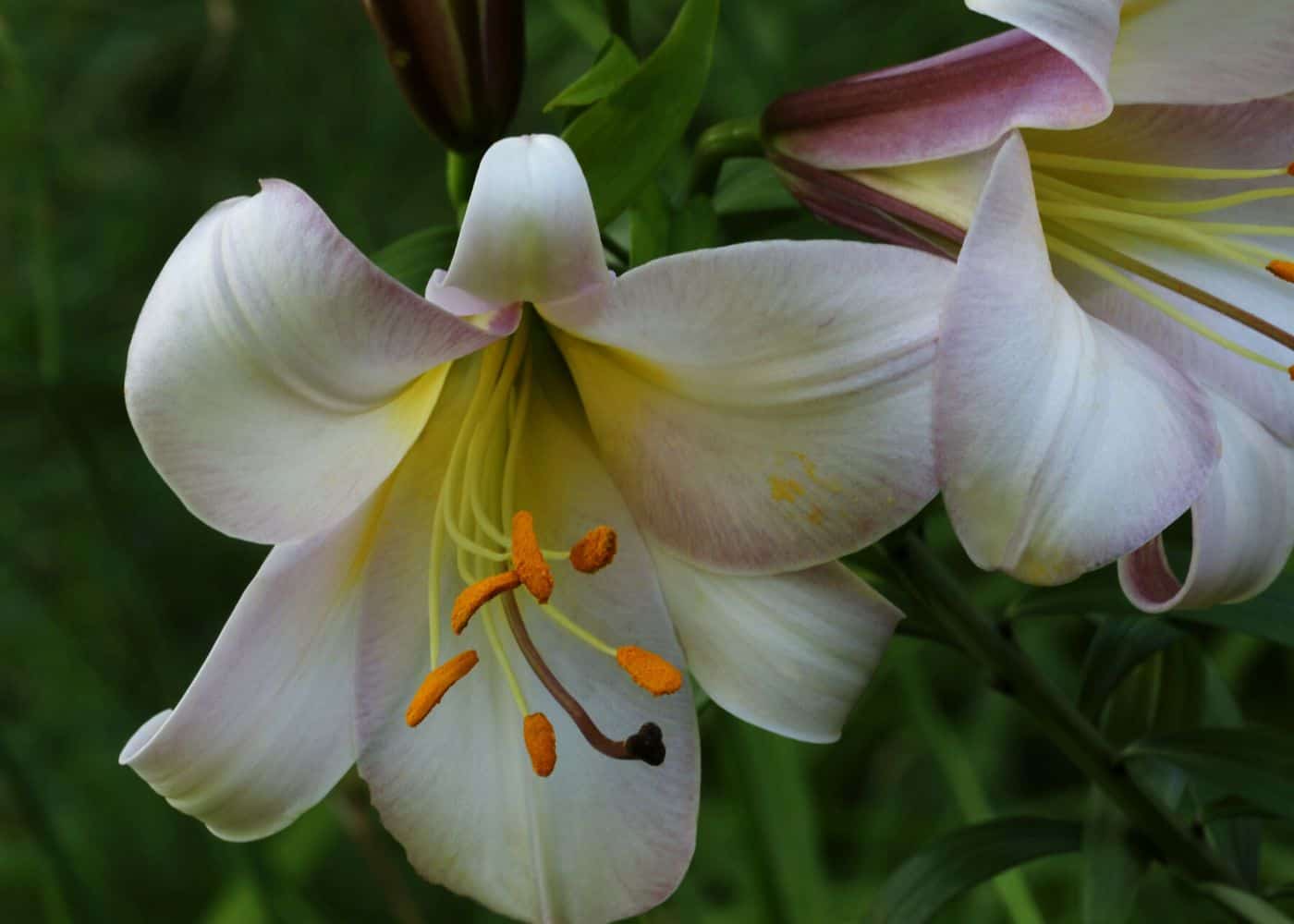
4. Trumpet lilies
Due to their beautiful trumpet-shaped flowers, trumpet lilies are a popular choice for gardeners. These plants can reach heights of up to six feet and come in shades of white, yellow, pink, and orange. Trumpet lilies are easy to care for and can be grown in containers or directly in the ground.
When planting trumpet lilies outdoors, choosing an area that receives full sun or partial shade with well-draining soil is important. If you’re growing them indoors, ensure they have plenty of light but avoid direct sunlight as this could cause the leaves to burn. When watering your trumpet lilies, ensure not to over water, as this could lead to root rot. It’s best practice to check the soil before watering; if it feels dry, give your plant some water until it runs out from the bottom of the pot or container.
Fertilizing is also important when caring for trumpet lilies; use a balanced fertilizer once every two weeks during spring and summer months while reducing frequency during winter months when growth slows down significantly. Pruning should only be done after flowering has finished. Make sure not to remove any foliage unless absolutely necessary, as this could reduce flowering potential next year.
If you want even more color from your trumpet lily, consider deadheading (removing spent flowers) regularly throughout its bloom period, which will encourage additional flower production on each stem – making them look fuller than ever. Additionally, mulching around these plants helps retain moisture so they don’t dry out quickly between waterings.
Finally, if pests become an issue, try using insecticidal soap or neem oil spray instead of chemical pesticides whenever possible. These natural solutions are safer for humans and wildlife without sacrificing effectiveness against common garden pests like aphids or spider mites.
In general, trumpet lilies are hybrids bred from the following species and inter-species hybrids: L. × aurelianense, brownii, L. × centigale, henryi (called Aurelian when crossed with other trumpet lilies), L. × imperiale, L. × kewense, leucanthum, regale, rosthornii, sargentiae, sulphureum, and L. × sulphurgale.
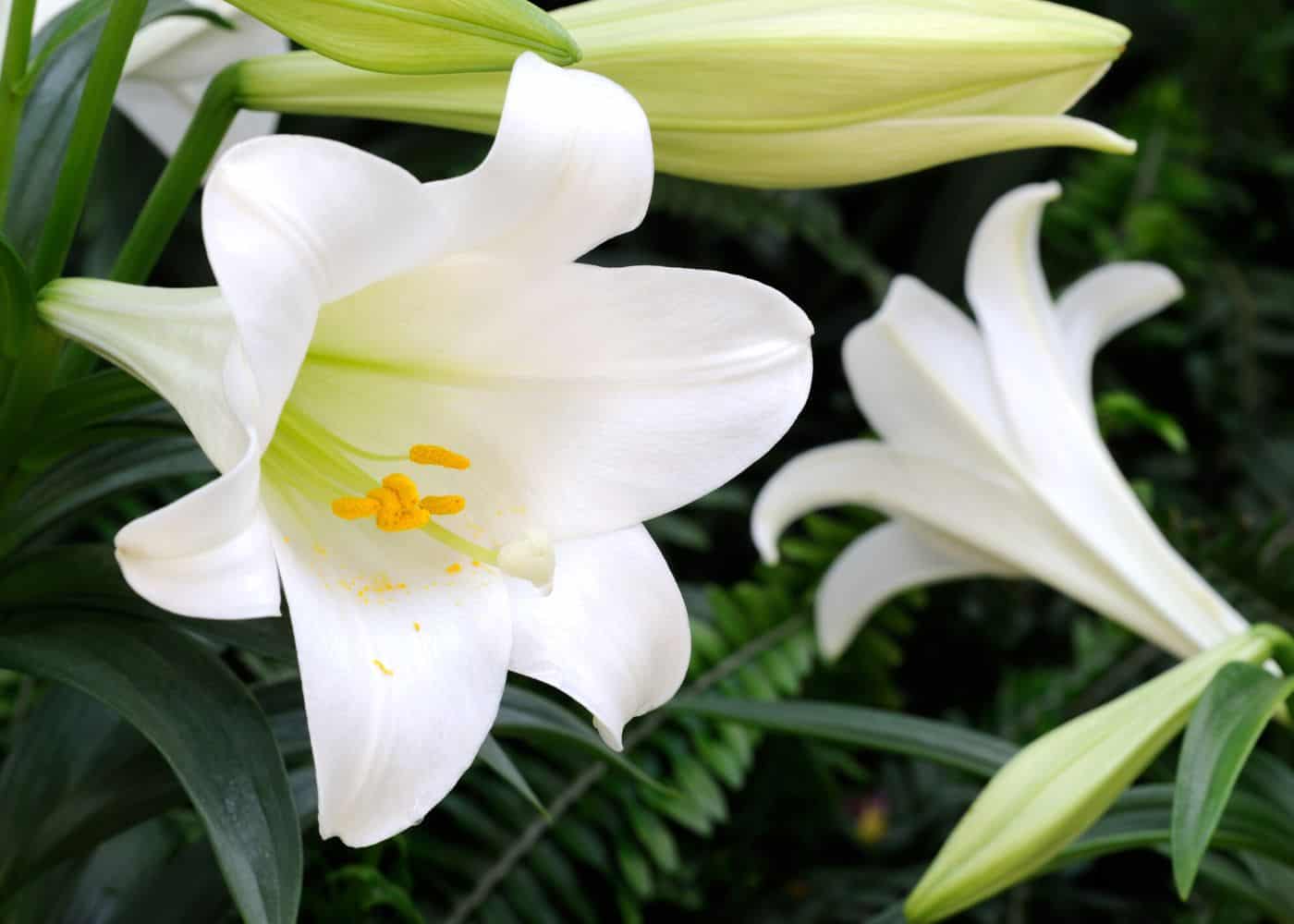
5. Easter lilies
Easter lilies are popular for springtime gardens and for indoor festive Easter displays. These beautiful flowers bloom in white, pink, and yellow colors and have long-lasting blooms that can last up to two weeks or more. They’re easy to care for and make a great addition to any garden.
Easter lilies should be planted in well-drained soil with plenty of organic matter added before planting. Plant the bulbs at least 6 inches deep and 12 inches apart from each other, so they have room to grow. Water them regularly during the growing season but avoid overwatering, which can cause root rot or fungal diseases.
To keep your Easter lilies looking their best, fertilize them every couple of weeks with an all-purpose fertilizer according to package directions. Deadhead spent blooms as soon as possible after flowering has finished; this will help encourage new growth and more blooms next year. Prune off any dead leaves or stems throughout the season if needed; this will also help promote healthy growth.
Easter lilies are relatively pest-free but may occasionally suffer from aphids or spider mites, which can be treated with insecticidal soap sprays if necessary. Fungal diseases such as powdery mildew may also occur; these can usually be prevented by avoiding overhead watering and providing adequate air circulation around plants when possible.
When it comes time to harvest your Easter lily bulbs, wait until the foliage has died back completely before digging them up carefully using a spade or trowel – try not to damage the roots too much. Store harvested bulbs in a cool dry place until ready for replanting next spring/summer season; don’t forget about them.
Easter Lilies are generally longiflorum species lilies, but are sometimes inter-species hybrids of the following Lilium species: formosanum, longiflorum, philippinense, and wallichianum.
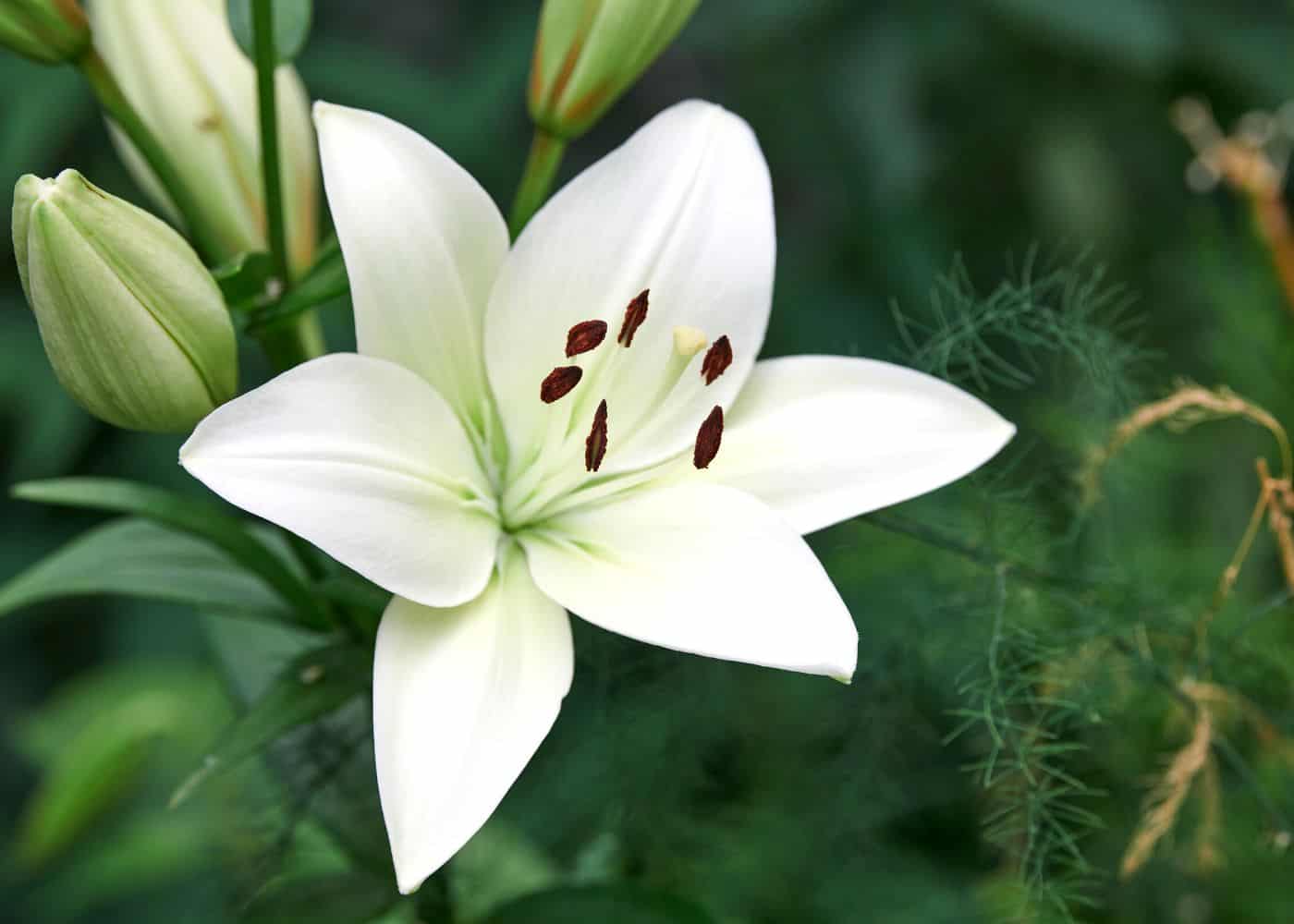
6. Madonna lilies
Madonna lilies, also known as Lilium candidum, are a beloved type of lilies. These white flowers have a beautiful fragrance that can fill any garden with a sweet scent. They are native to southern Europe and western Asia but can be found in many parts of the world today.
The Madonna lily is an easy-to-grow flower that requires little maintenance once established. It grows best in full sun or partial shade and prefers moist soil with good drainage. The plant will reach heights up to three feet tall when mature, so it’s important to give it plenty of room for growth if you plan on planting multiple plants together.
When it comes time to care for your Madonna lilies, there are some simple steps you should take to ensure they thrive: Water regularly during dry periods; fertilize every few weeks during spring and summer; remove spent blooms promptly; prune back foliage after flowering has finished; mulch around the base of the plant in late fall or early winter; protect from frost by covering with burlap or plastic sheeting if necessary.
Depending on where you live, these stunning white blooms appear between June and August, making them perfect for adding color to your garden throughout the summer months. Their trumpet-shaped petals make them stand out amongst other varieties of lilies, while their strong stems help keep them upright even through windy days. Plus, they attract butterflies, adding even more beauty to your outdoor space.
The botanical species for the Madonna lily is Lilium candidum.
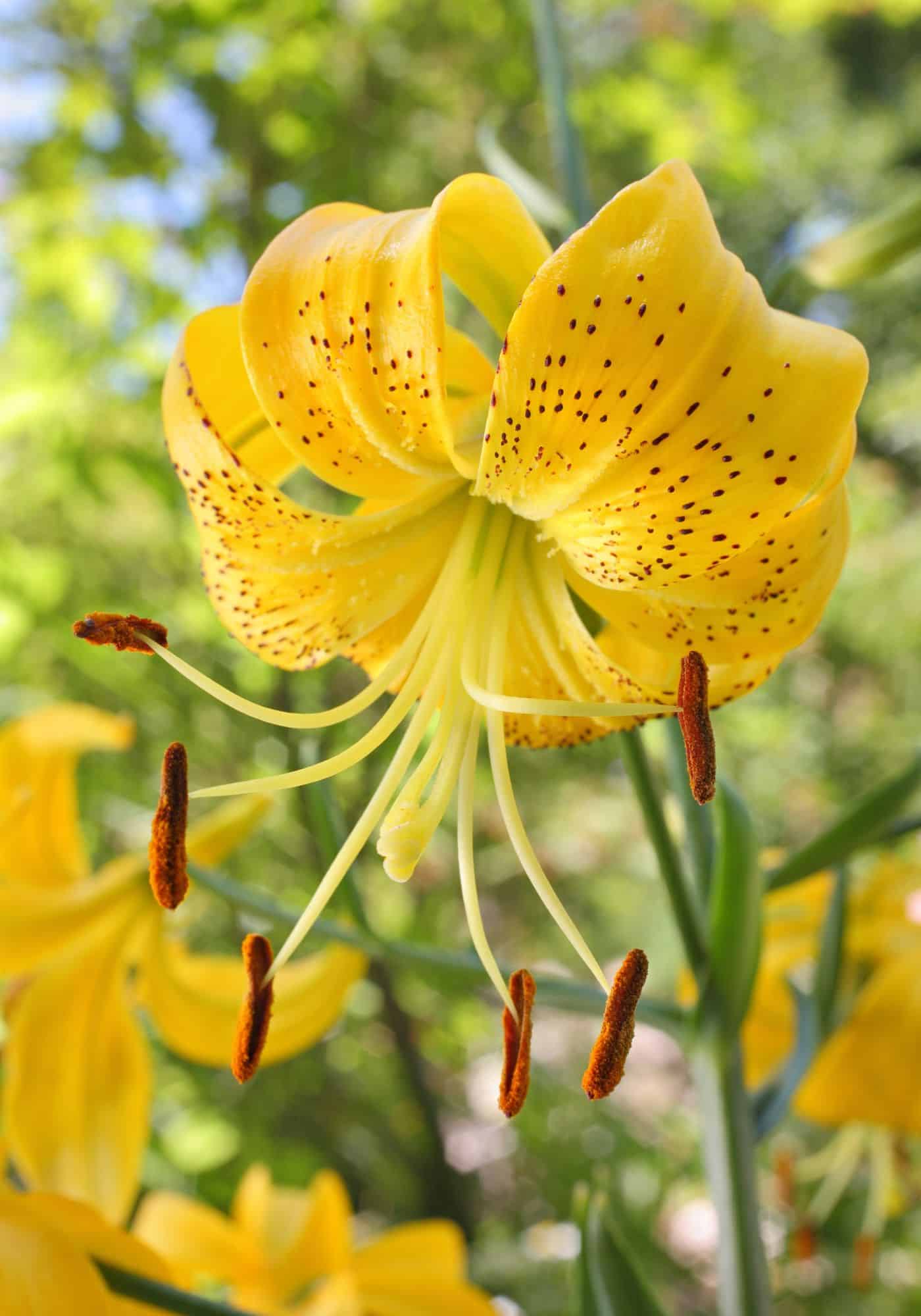
7. Leopard lilies
Leopard lilies (Lilium pardalinum), also known as panther lilies, are a beautiful and unique wildflowers that are native to California, Oregon, and northwest Mexico. These plants are known for their tall, striking appearance and their brightly colored, spotted flowers.
One of the most striking features of leopard lilies is their height. When in full bloom, these plants can reach up to 6-8 feet tall, making them a dramatic addition to any garden. The petals of the flowers are a vibrant orange-yellow color, with dark brown spots that give the flowers their distinctive leopard-like appearance. The shape of the flowers is a Turk’s cap shape, which adds to the striking appearance of the plant.
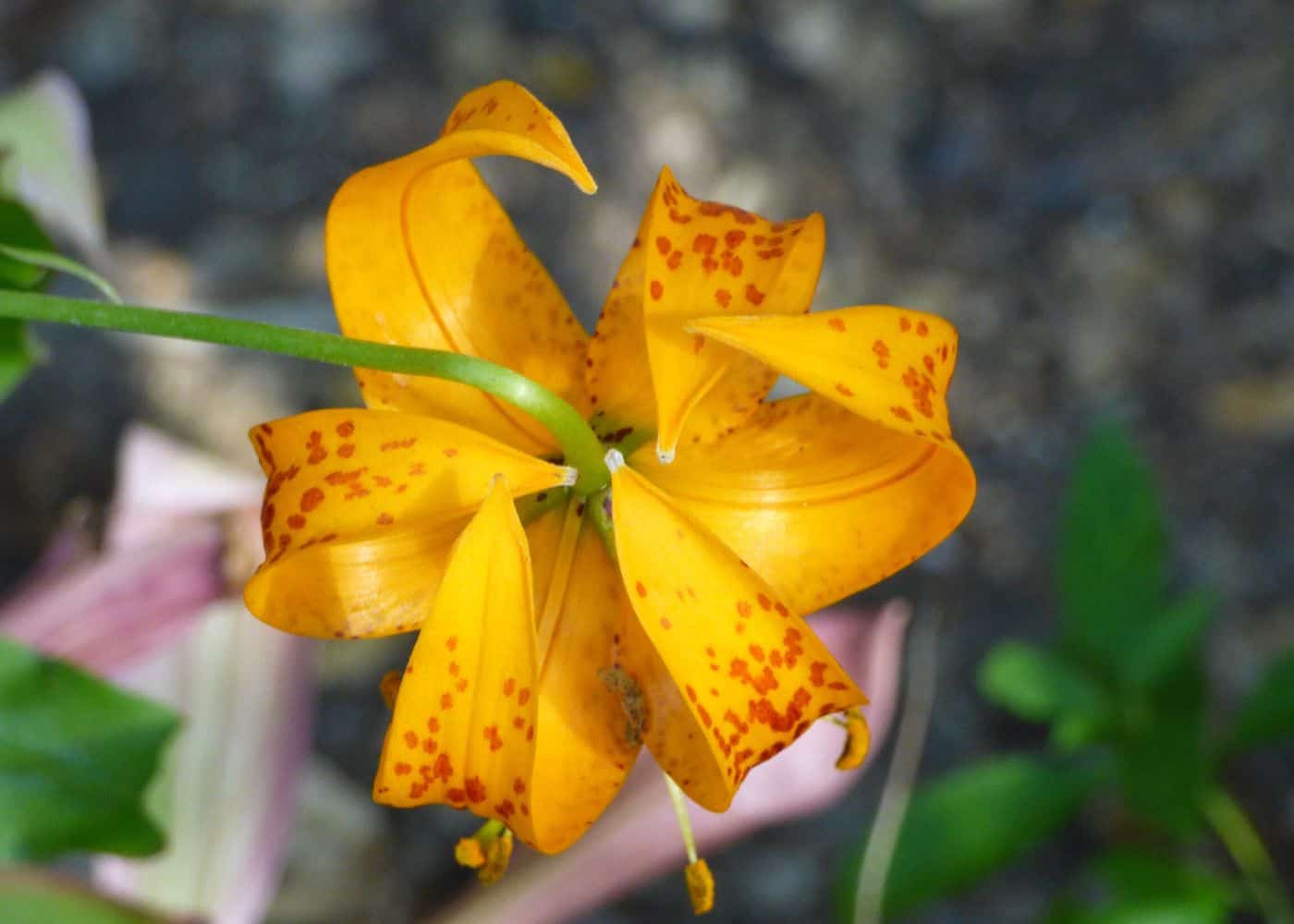
Leopard lilies typically bloom in July, making them a great summer garden addition. They prefer well-drained soil and full sun to partial shade, making them well-suited to a variety of growing conditions. They are also relatively low maintenance, requiring only occasional watering and fertilizing.
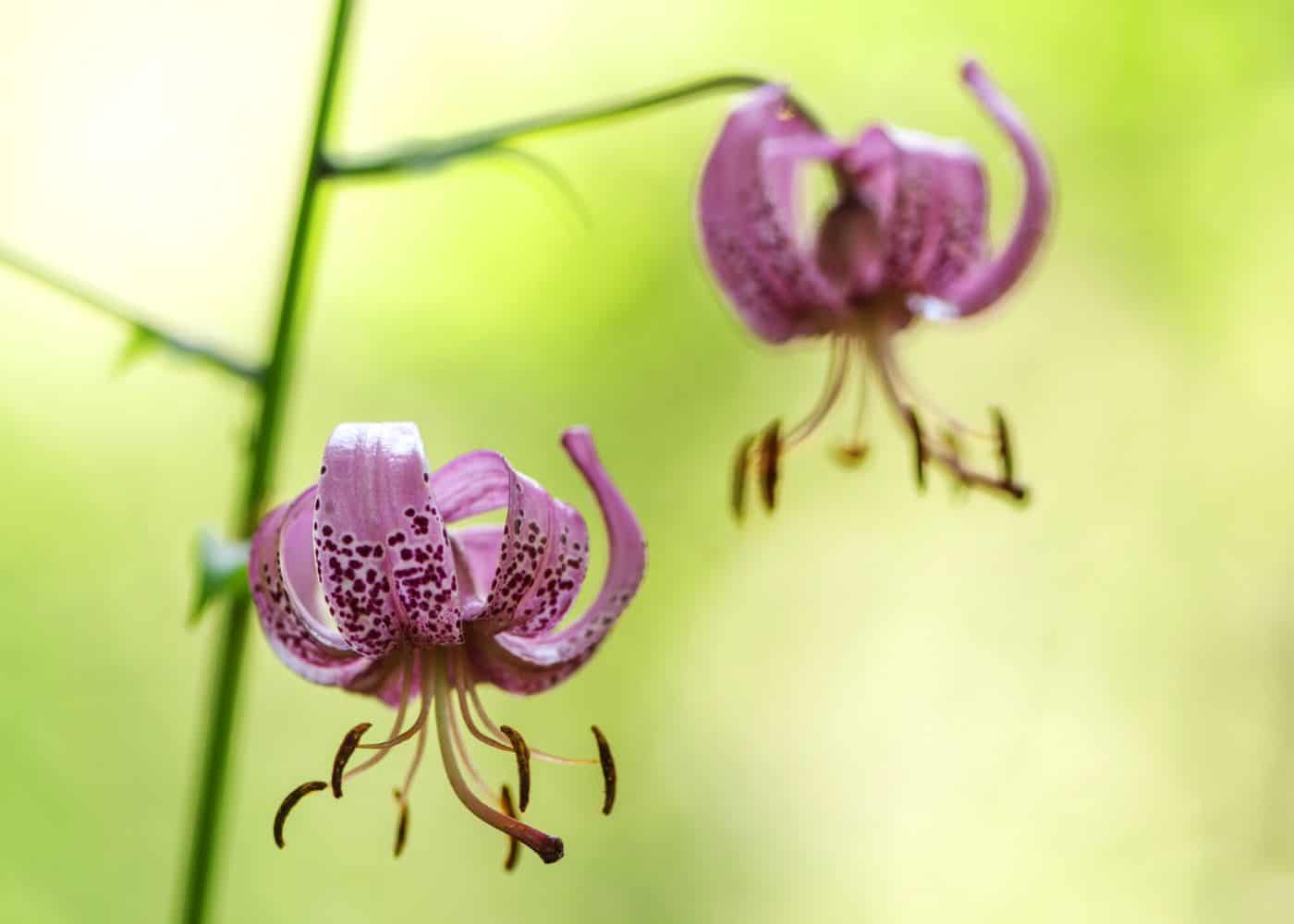
8. Martagon lilies (Turk’s cap lilies)
Martagon lilies (Lilium martagon), or the Turk’s cap lily, are a stunning and unique type of flower native to southern Europe and Asia. This beautiful plant features large, nodding flowers with reflexed petals and an upright trumpet-shaped center.
The flowers have an unmistakable look, with their long stems, large curled blooms, and attractive spotted petals. The colors range from white to pinkish-purple or even deep purple. They also feature yellow stamens in the center of each bloom.
Martagon lilies prefer cooler climates with moist soil and partial shade; however, they will tolerate full sun if given enough water during dry spells. Planting them near trees or shrubs is ideal for providing some shade while still allowing plenty of sunlight for flowering.
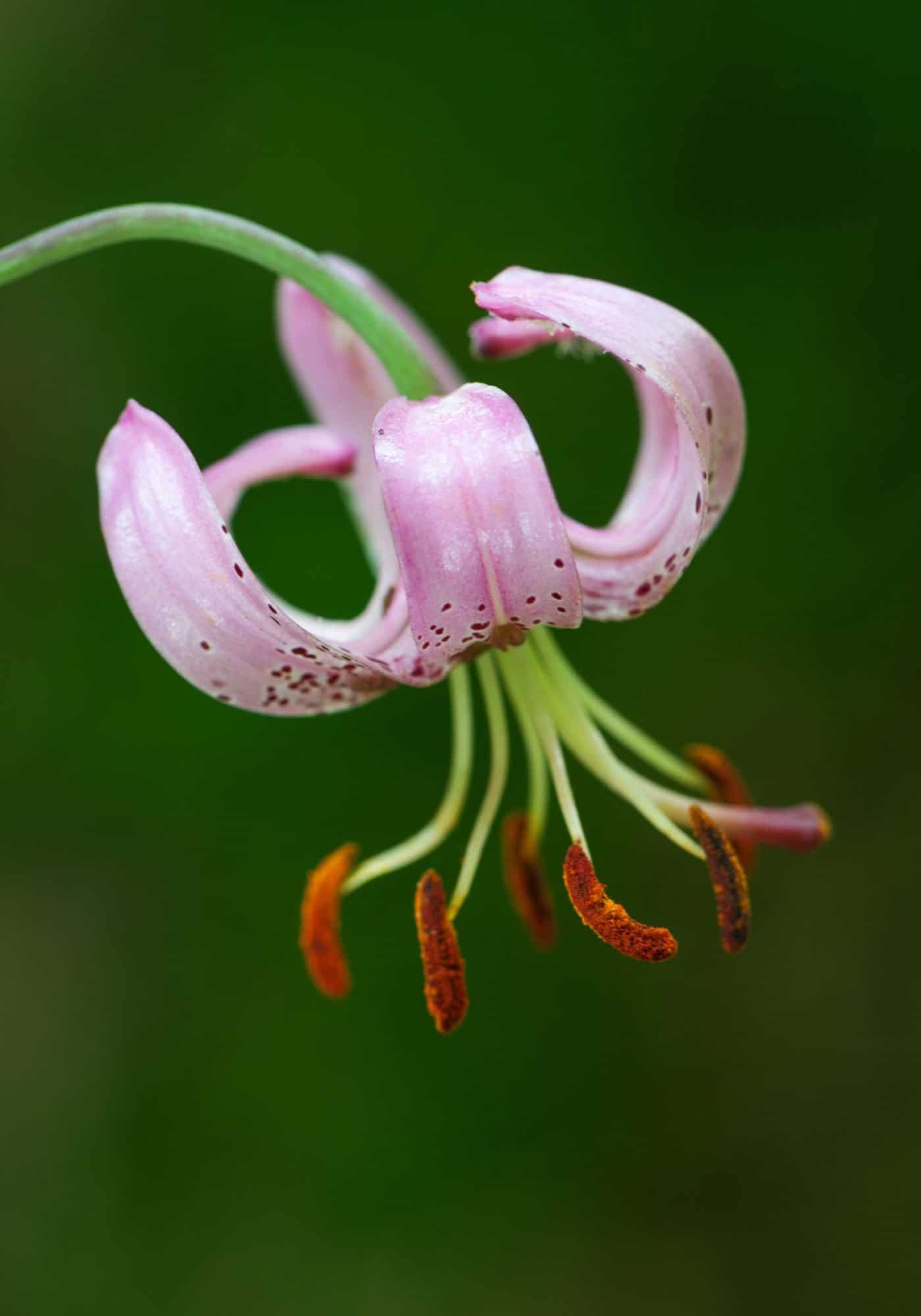
When it comes to planting Martagon lilies, you should plant the bulbs 6 inches deep into loose soil that has been amended with compost or manure before planting season begins (usually late fall). It’s important not to overcrowd your bulbs so give them at least 8 inches between each one when planting them in groups or rows.
These flowers don’t require much maintenance after they’ve been planted other than regular watering during periods of drought and occasional weeding around the base of plants once they start growing taller than 10 inches above ground level. Deadheading spent blooms is recommended if you want more flowers throughout summertime months, but this isn’t necessary unless desired by the gardener since these plants tend to self-seed quite easily.
In addition to being beautiful ornamental plants, Turk’s cap lilies also attract butterflies and hummingbirds, which makes them great additions to any wildlife garden. Planting these lovely flowers near other pollinator-friendly plants such as coneflowers or bee balm will create a vibrant habitat where bees and other beneficial insects can thrive while providing you with plenty of colorful blooms throughout the summer months too.
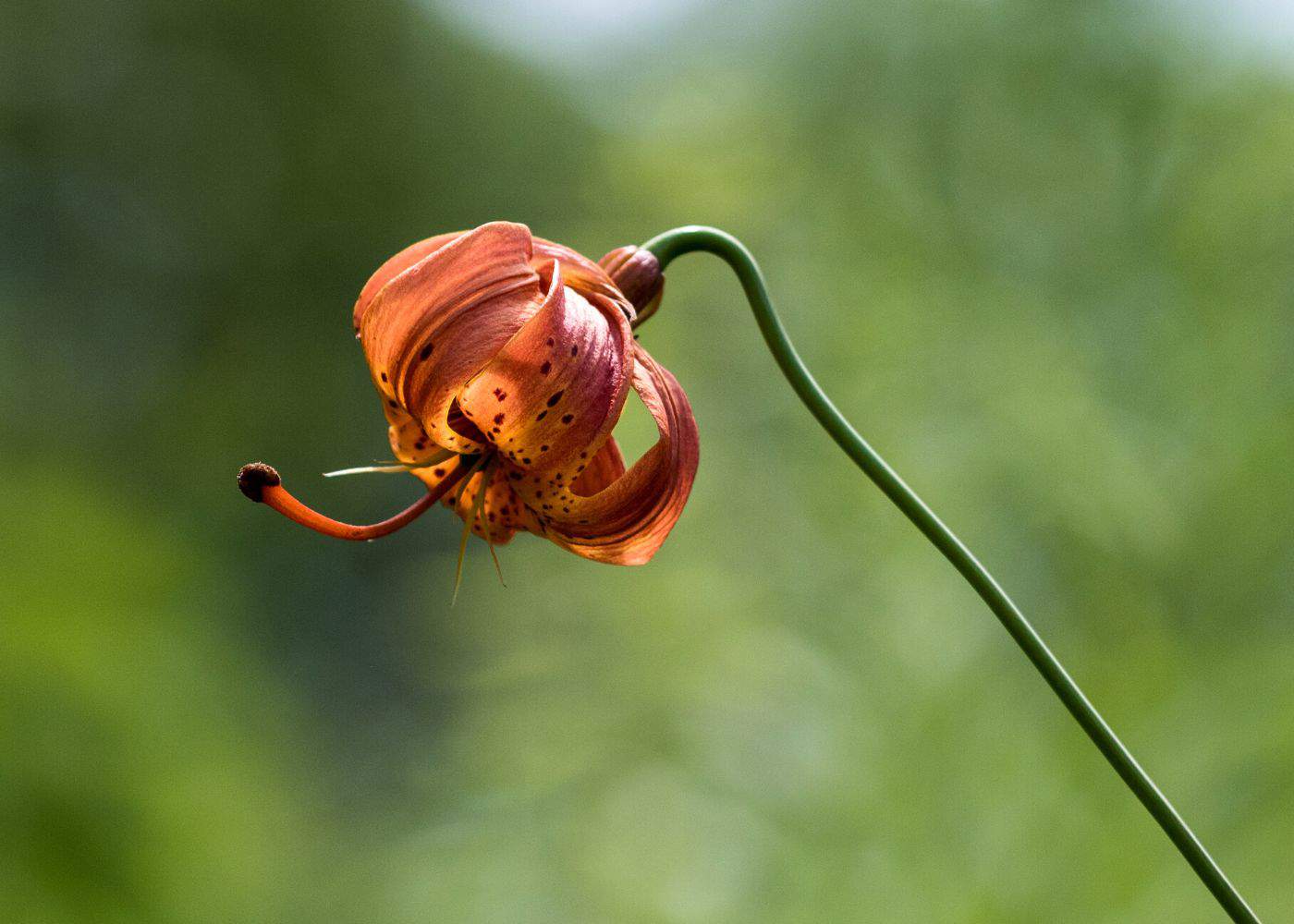
9. Michigan lilies
Michigan lily (Lilium michiganense) is a species of lily native to the eastern United States and Canada. It is a perennial plant that grows to about 3-4 feet tall, with large, trumpet-shaped flowers that are typically orange or yellow in color.
The Michigan lily blooms in late summer and is often found in woodlands and along stream banks. It is also sometimes cultivated for ornamental purposes.
10. Wood lilies
Wood lily (Lilium philadelphicum) is a species of lily native to eastern North America. It is a perennial plant that grows to about 3-4 feet tall, with large, showy, orange-red flowers that have six recurved tepals and a central, protruding style. The leaves are broad and glossy and grow in a basal rosette.
Wood Lilies typically bloom in mid to late summer and are often found in woodlands, prairies, and along riverbanks. It is also sometimes cultivated for ornamental purposes.
Note that the name wood lily is sometimes used for the plant yellow trillium (Trillium luteum), which is not a true lily but is within the botanical order Liliales.
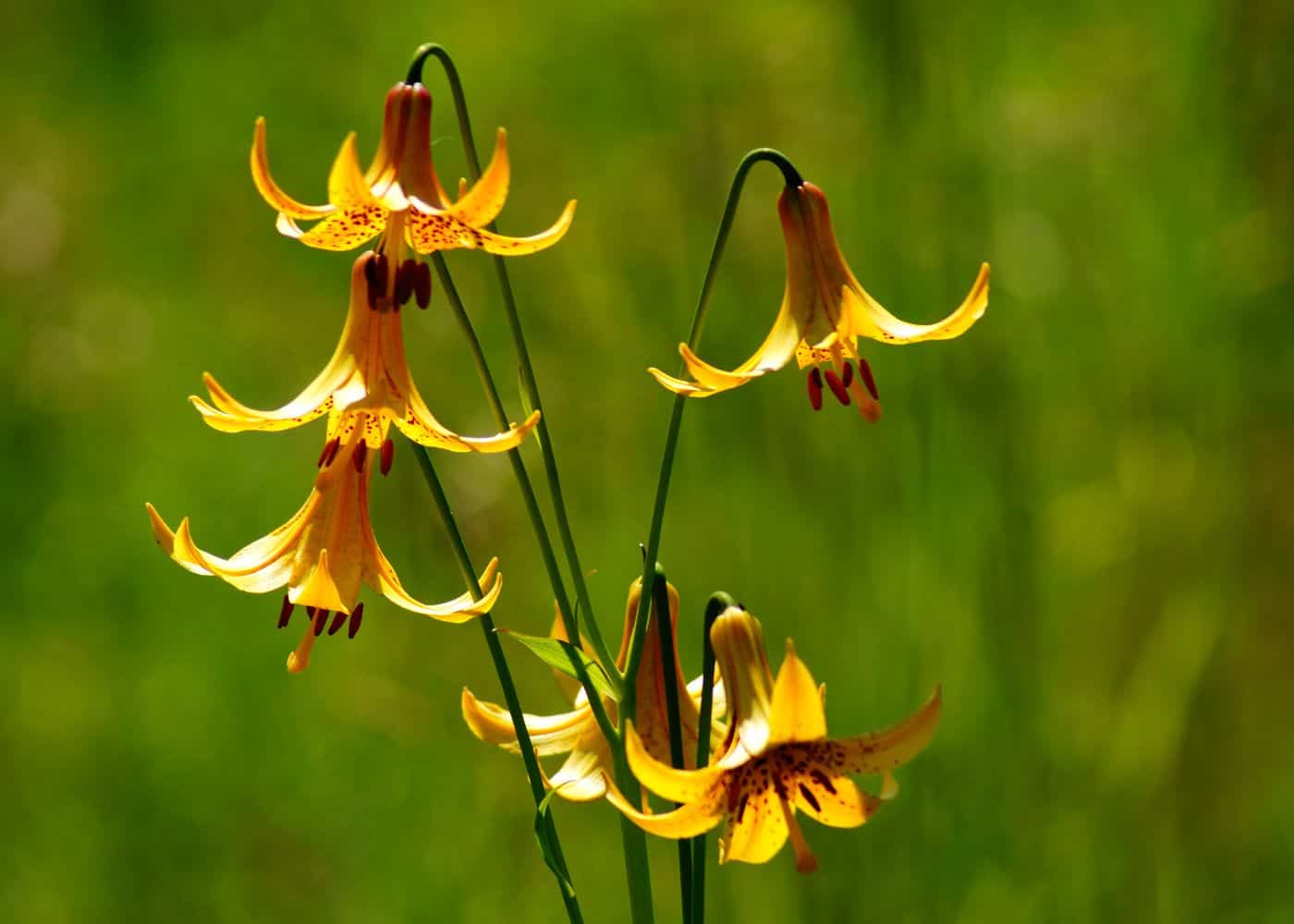
11. Canada lilies
Canada lily (Lilium canadense) is a species of lily native to North America. It is a perennial plant that grows to about 2-4 feet tall, with large, trumpet-shaped flowers that are typically orange or yellow in color.
The Canada lily blooms in mid to late summer and is often found in wetlands, meadows, and along stream banks. The leaves are broad and glossy and grow in a basal rosette. It is also sometimes cultivated for ornamental purposes.

12. Orienpet lilies
Orienpet lilies, also known as OT Hybrid Lilies, are a type of lily hybrid that are created by crossing Oriental lilies with trumpet lilies. They are known for their large, showy flowers and long-lasting blooms, and typically have the strong fragrance characteristic of Oriental lilies, but with larger flowers and a more upright habit.
They are typically taller than Asiatic lilies and can reach heights of 4-6 ft, depending on the cultivar. They typically bloom in late summer and come in a wide variety of colors, including white, yellow, pink, red, and bi-colors. Orienpet lilies are also available in a wide variety of sizes, from dwarf varieties to tall varieties, making them a versatile choice for any garden.
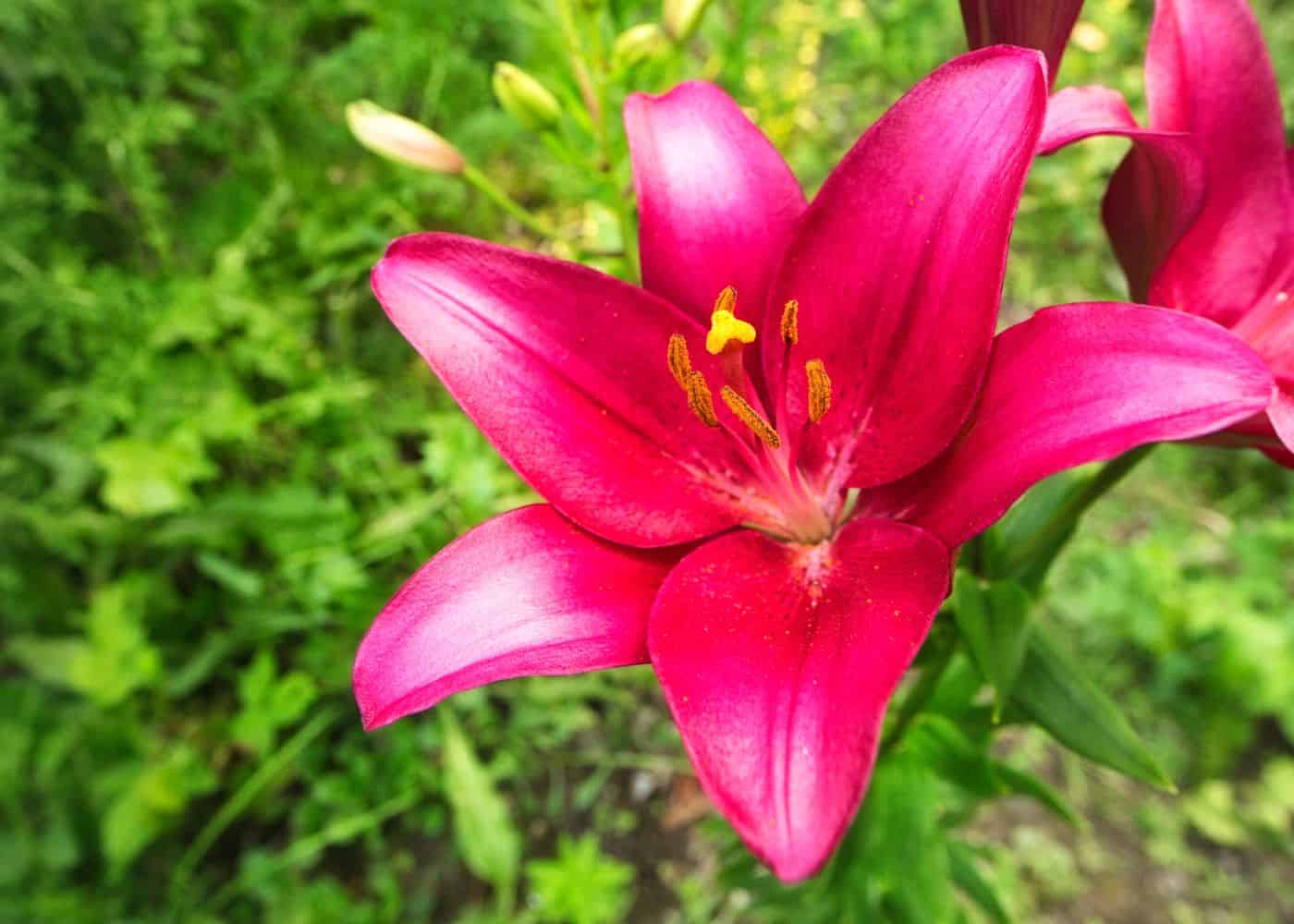
13. LA Hybrid lilies
LA (Longiflorum x Asiatic) hybrid lilies are a group of lily hybrids created by crossing Longiflorum (Easter) lilies with Asiatic lilies. They are known for their large, showy flowers and typically have a strong, sweet fragrance. They usually have a more upright habit than the Easter lilies, and the flowers are often larger, more colorful, and more long-lasting.
LA hybrids are typically mid-size lilies, with heights ranging from 2-4 ft, and bloom in mid to late summer. They come in a wide variety of colors, including white, yellow, pink, red, and bi-colors. They are also well suited for cut flowers and are popular in commercial cut flower production.
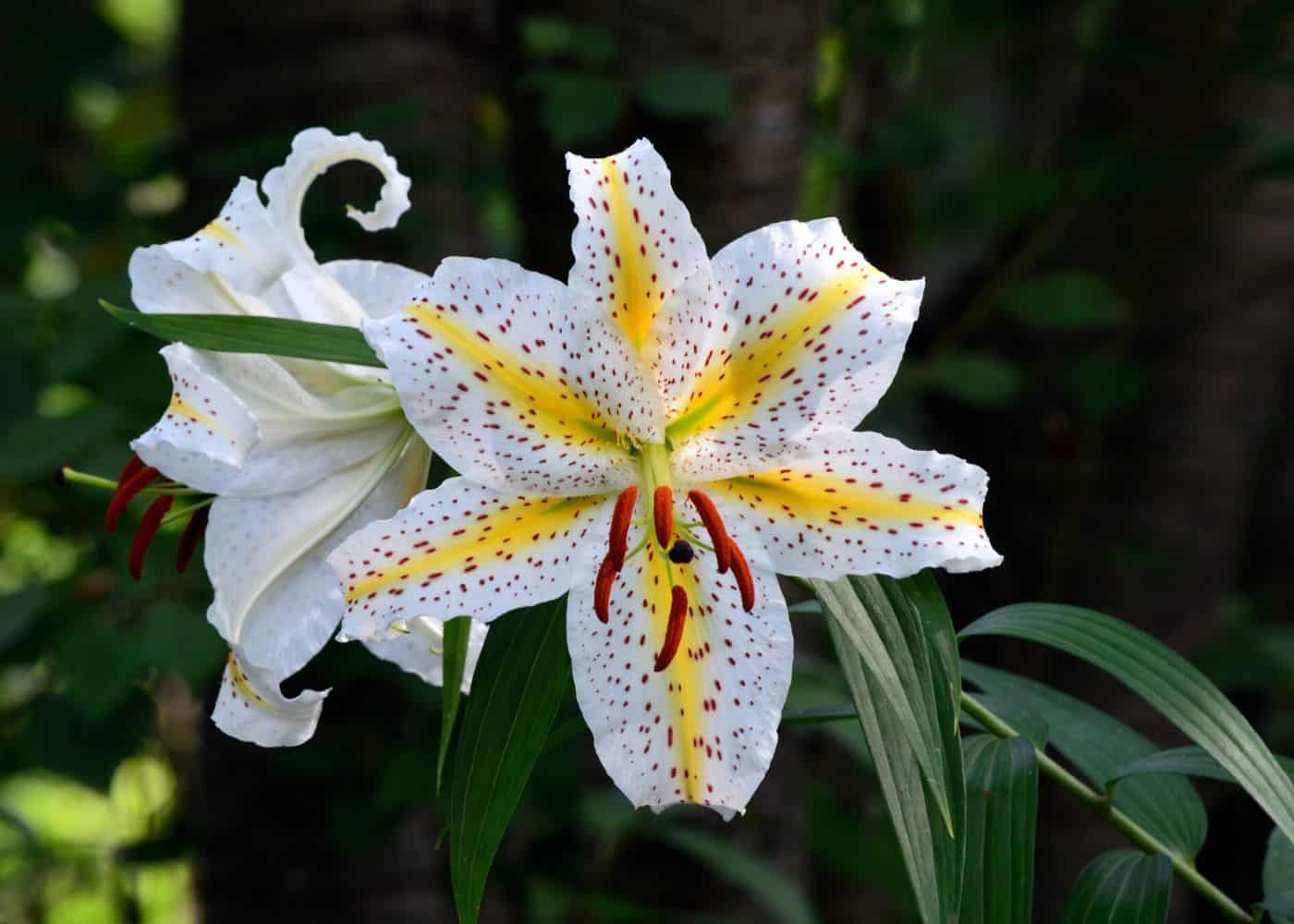
14. Golden rayed lilies
The Golden-rayed lily (Lilium auratum) is a species of lily native to Japan. It is a perennial plant that grows to about 3-5 feet tall, with large, showy, fragrant flowers that have recurved, yellow to orange tepals, with a central, protruding style. The leaves are broad and glossy and grow in a basal rosette.
The Golden-rayed lily typically blooms in late summer and is a popular ornamental plant due to its large and striking flowers. It is also considered an important plant in the culture of Japan and is used in traditional gardens and ceremonies.

15. Carpet border lilies
Carpet border lilies are a group of lily cultivars specifically bred for their low-growing habit and ability to create a “carpet” of color when planted in mass. These lilies tend to be smaller in height, reaching around 12-18 inches tall, and have a compact, bushy growth habit.
Carpet border lilies typically bloom in late spring to early summer and come in a wide variety of colors, including white, yellow, pink, red, and bi-colors. They’re well suited for use as a ground cover, in rock gardens, or as a border plant. They are also a good choice for planting in pots or raised beds or for planting in areas where taller lilies may be too large.
16. American Hybrid lilies
American Hybrid lily varieties are hybrids created from North American species such as canadense, philadelphicum, michiganense, and washingtonianum. These hybrids usually have yellow-orange flowers that are small-medium and tend to face downwards. Most American hybrid cultivars have flower petals with spots, but the flowers are not very fragrant.
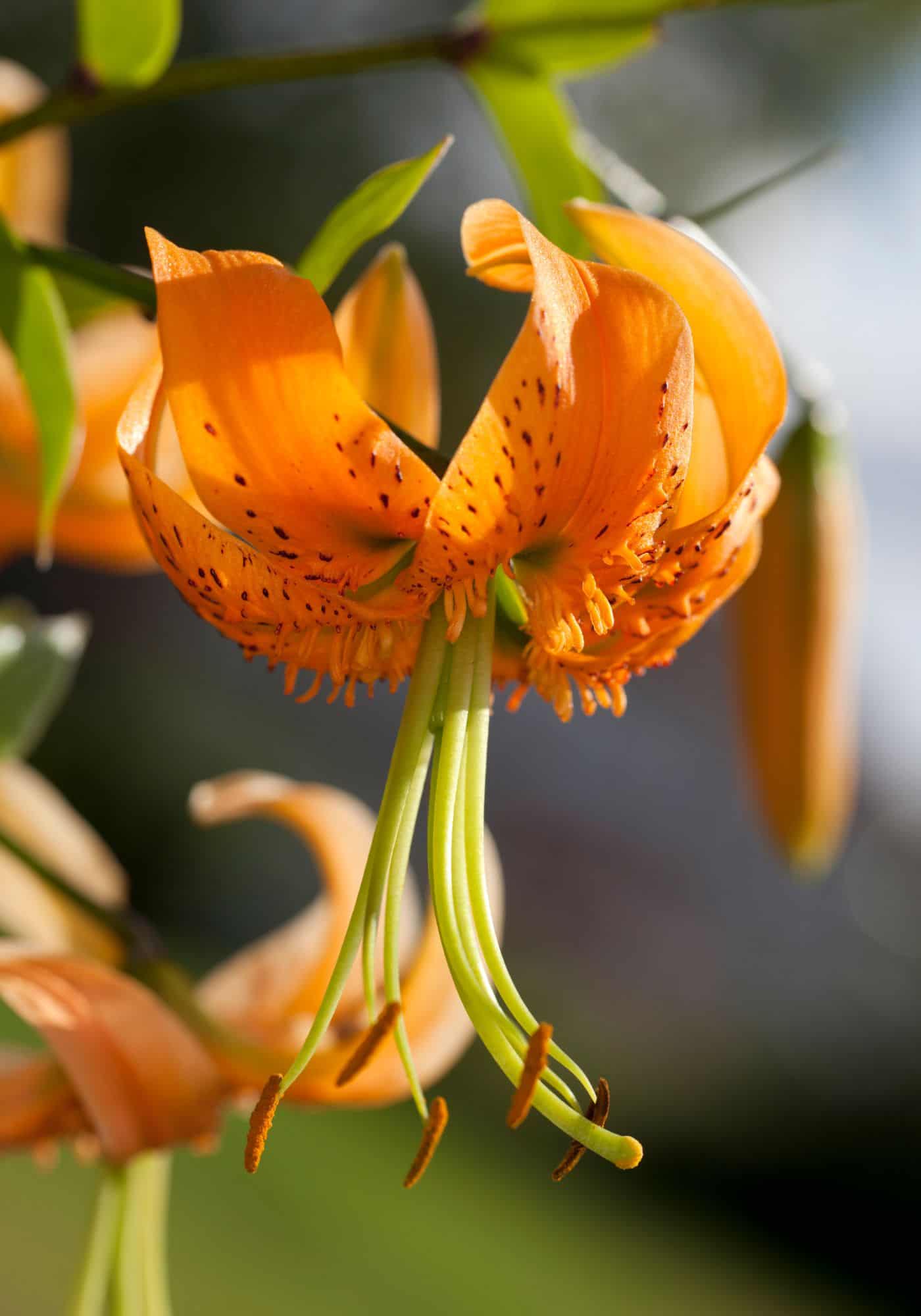
17. Henry’s lilies
Henry’s lily (Lilium henryi), is a native of central China. The flowers are orange with black spots. It is a perennial plant that grows to about 3-5 feet tall, with large, showy, orange-colored flowers that have black spots on the tepals. The leaves are broad and glossy and grow in a basal rosette.
It blooms in mid to late summer and is known for its striking and unique orange-black flowers. It is also considered an important plant in the cultural context of China and is used in traditional Chinese gardens and ceremonies. It is also cultivated as an ornamental plant and is appreciated for its beauty and as a cut flower.

18. Washington lilies
The Washington lily (Lilium washingtonianum), also known as the Shasta lily or Mt. Hood lily, is a North American plant species in the lily family. It is a bulbous perennial plant that can grow up to 3-5 feet (1-1.5 meters) tall. It has large, showy flowers that are typically pink, red, or white in color, with six petals and a prominent central trumpet.
This species is named after Martha Washington and not the state of Washington. It is native to the Cascade Range and Sierra Nevada of western North America and is found only in the states of California and Oregon (not Washington state).
The flowers bloom in late spring to early summer and are pollinated by bees and other insects. The plant has long, narrow leaves that are arranged around the stem. The leaves are typically dark green in color and are about 2-4 inches (5-10 cm) wide and 8-12 inches (20-30 cm) long.
Types of lilies that aren’t true lilies
Some plants outside of the Lilium genus are called lilies. While these are not “true lilies” botanically speaking, because they are not in the genus Lilium, many florists and gardeners still refer to them as lilies.
Some just have a lily-like appearance, while others were formerly classified as lilies before being re-classified outside the genus. Some are in the overall lily family but are not within the genus Lilium.
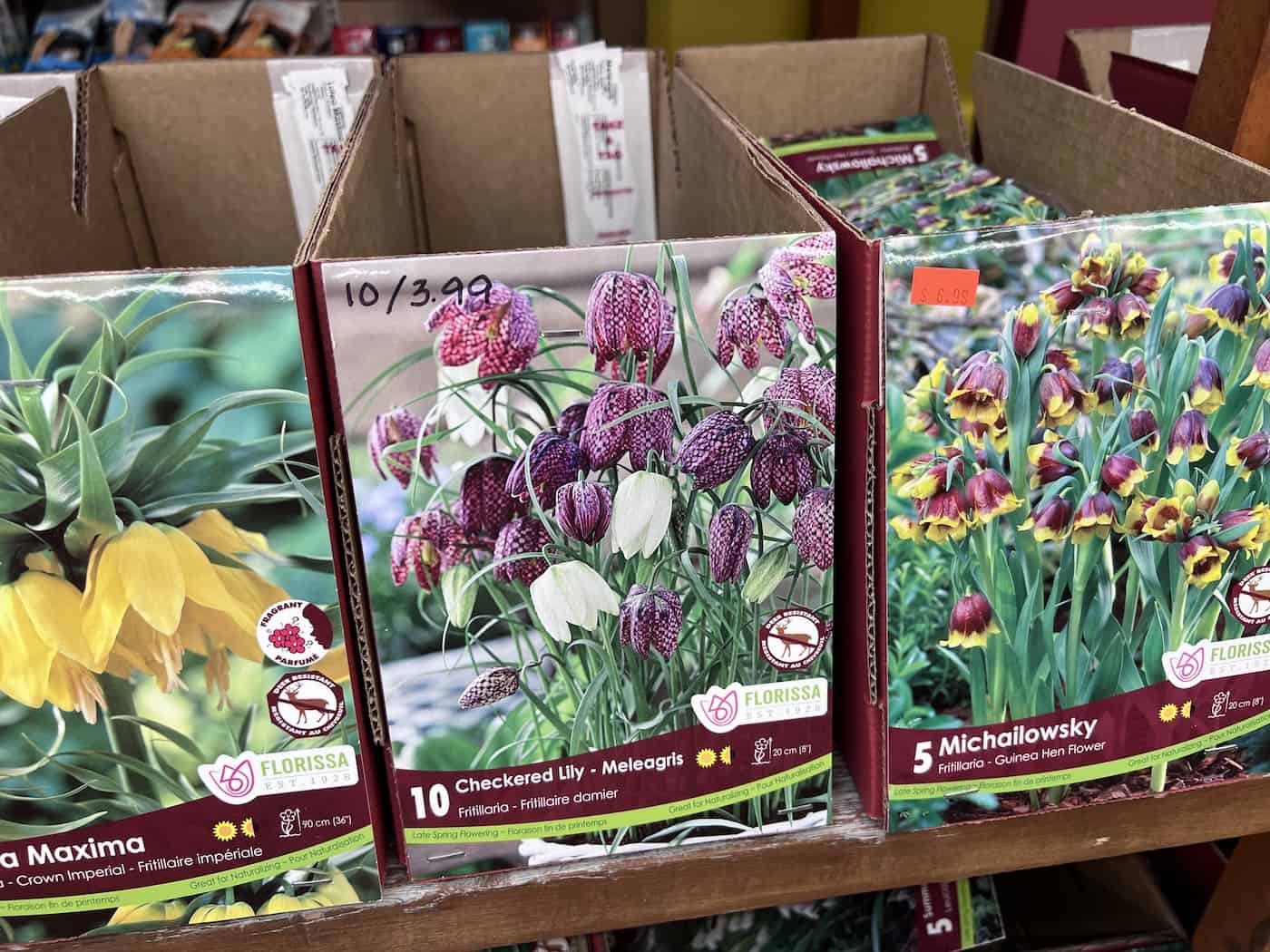
The following plants with a common name that includes “lily” are not in the genus Lilium, but are related as they are within either the order Liliales or within the lily family Liliaceae:
- Toad lilies (Tricyrtis hirta, within the lily family Liliaceae)
- Trout lily (Erythronium, within the lily family Liliaceae)
- Checkered lily (Fritillaria species, within the lily family Liliaceae)
- Bluebead lilies (Clintonia species, within the lily family Liliaceae)
- Giant Himalayan lilies (Cardiocrinum giganteum, within the lily family Liliaceae)
- Peruvian lilies (Alstroemeria, family Alstroemeriaceae within order Liliales)
Tulips (Tulipa species) are also members of the lily family, Liliaceae. Tulips are most commonly related to trout lilies and the yellow star-of-Bethlehem flower.
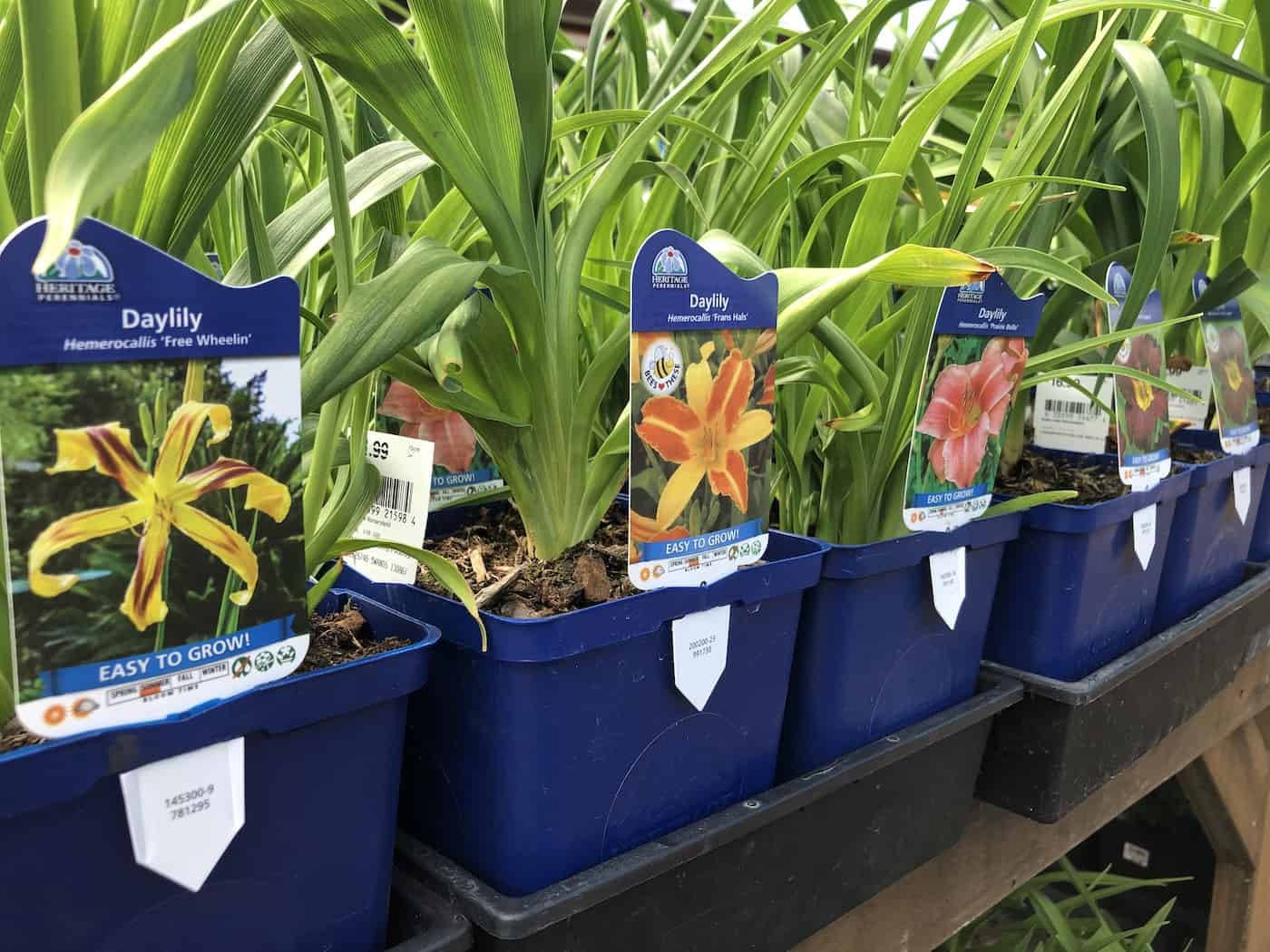
Lilies that aren’t lilies at all
The following plants with a common name that includes “lily” are not in the genus Lilium, within the lily family Liliaceae, or within the order Liliales. These “lilies” are in completely different plant families:
- Daylily (Hemerocallis species, within the asphodel family Asphodelaceae)
- Lily of the valley (Convallaria majalis, within the asparagus family Asparagaceae)
- Plantain lily
- Peace lily (Spathiphyllum species, within the arum family Araceae)
- Red peace lily (Anthurium species, within the arum family, Araceae)
- Dragon lily (Dracunculus vulgaris, within the arum family Araceae)
- Calla lily (Zantedeschia aethiopica, within the arum family Araceae)
- Canna lily (Canna species, within the family Cannaceae)
- Shampoo ginger lily (Zingiber zerumbet, in the ginger family Zingiberaceaethe)
- Spider lily (Lycoris species, within the amaryllis family Amaryllidaceae)
- Lily of the Nile (Agapanthus praecox, within the amaryllis family Amaryllidaceae)
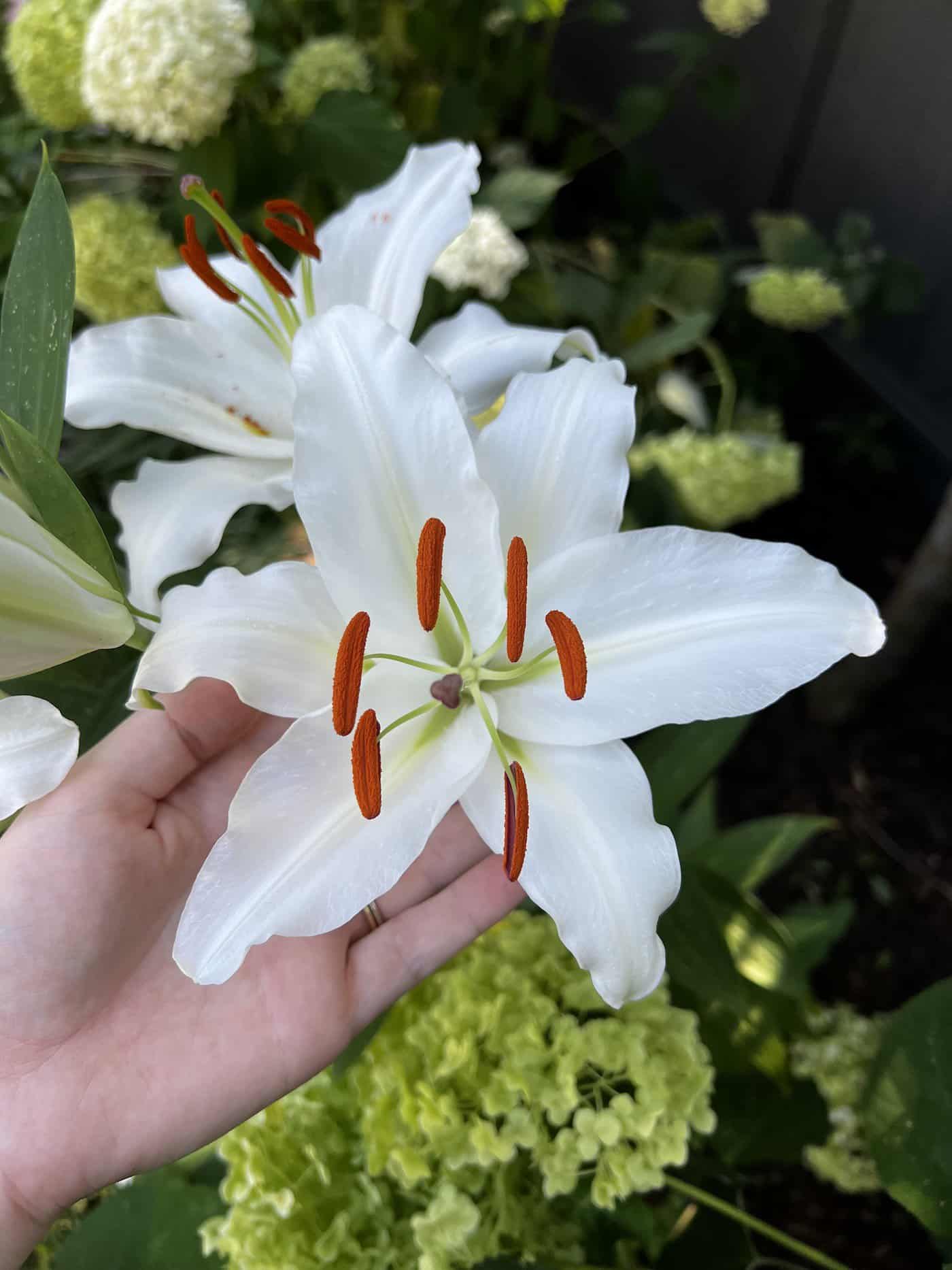
Lily classification systems
Lilies are a popular choice for many gardeners, and they come in a variety of shapes, sizes, and colors. The scientific name for lilies is Lilium, and there are several different types of lilies available. Asiatic lilies are the most common type of lily grown in gardens. They have large blooms that can be up to six inches across with vibrant colors ranging from white to yellow to pink and even purple. Asiatic lilies bloom during the summer months and require full sun or partial shade for optimal growth.
RHS lily divisions
Lily flowers can also be grouped into nine separate divisions using the Royal Horticultural Society’s horticultural classification standards. Most of the divisions are categories of hybrids, and then Easter lilies are separated from the rest of the lily species.
Here are the nine RHS lily divisions:
- Division I: Asiatic Hybrids (most popular, least expensive, easiest to grow)
- Division II: Martagon Hybrids (most shade tolerant, more expensive)
- Division III: Euro-Caucasian Hybrids (tolerant of alkaline soil)
- Division IV: American Hybrids (low scent, often yellow-orange-red petals)
- Division V: Longiflorum (the “Easter” lily, often trumpet-shaped, white petals)
- Division VI Trumpet and Aurelian Hybrids (white-yellow-pink petals, scented)
- Division VII: Oriental Hybrids (need acidic soil, scented)
- Division VIII: Other Hybrids (recent breeding developments, interdivisional)
- Division IX: Species (all species and selected cultivars, except those in Div. V)
Asiatic lilies are the most popular and easiest to find in the garden center. Oriental Lilies have larger flowers than Asiatics but smaller than Trumpet lilies. These blooms range from four to eight inches across with bright colors like reds, oranges, yellows, whites, pinks, and purples. Oriental Lillies also prefer full sun or partial shade when planted outdoors but will do best if brought indoors during cold winter months as they cannot tolerate frosty temperatures well at all.
Trumpet Lillies have huge trumpet-shaped flowers that can reach up to twelve inches across. They come in shades of yellow, orange, or white with deep red spots on their petals, making them quite eye-catching when in bloom. Trumpets prefer moist soil conditions, so make sure you water them regularly if planting outside – otherwise bring them inside during colder weather too.
Species lilies include the Madonna Lily (Lilium candidum), Martagon Lily (Lilium martagon) and Tiger Lily (Lilium tigrinum). All species need plenty of sunlight throughout the day but should be protected from strong winds as their stems tend to be fragile compared to other varieties of lily plants. Species generally take longer than hybrids such as Asiatics or Orientals before flowering so patience is key here.
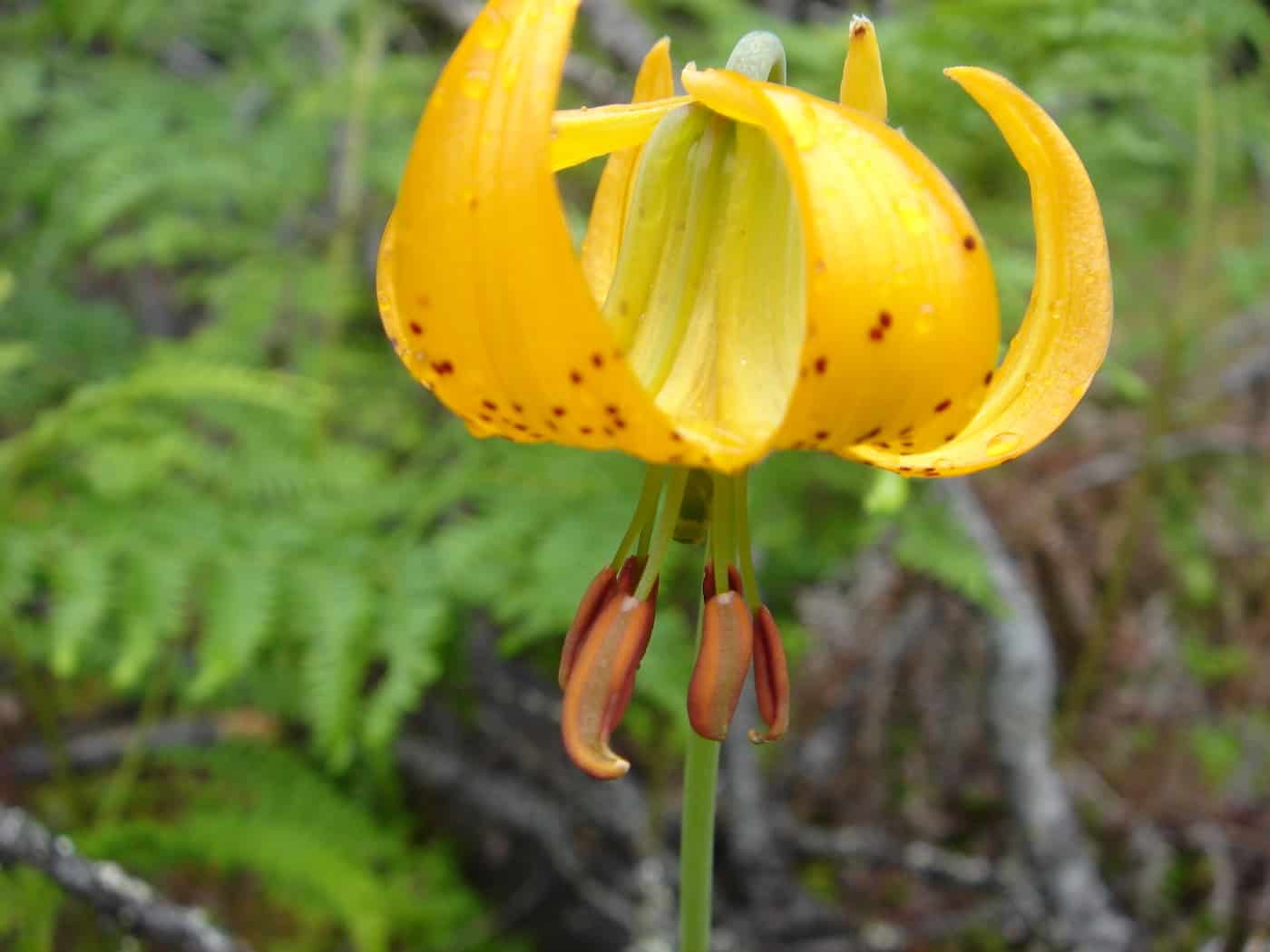
Lily species
There are currently 115 accepted species in the botanical genus Lilium. Here are 20 of the most well-known lily species:
- Lilium lancifolium
- Lilium candidum
- Lilium longiflorum
- Lilium auratum
- Lilium brownii
- Lilium parryi
- Lilium philadelphicum
- Lilium regale
- Lilium speciosum
- Lilium leichtlinii
- Lilium superbum
- Lilium bulbiferum
- Lilium formosanum
- Lilium martagon
- Lilium canadense
- Lilium henryi
- Lilium pumilum
- Lilium maculatum
- Lilium davidii
- Lilium occidentale
- Lilium michiganense
Visit Plants of the World Online for a complete list of accepted Lilium species.
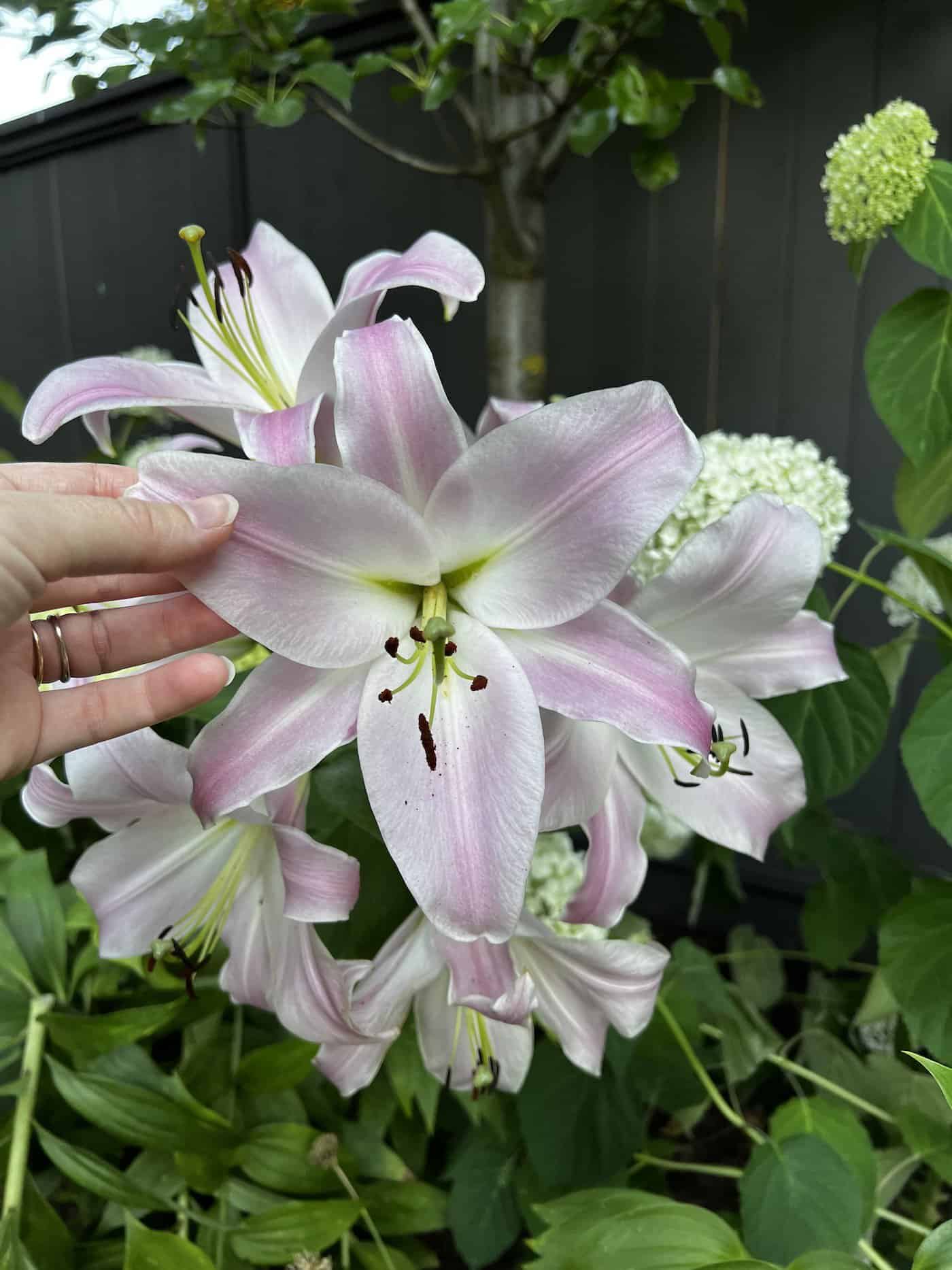
FAQs about the many types of lilies
What is the most common type of lily?
The most common type of lily is the Asiatic lily. It is a hybrid flower, created by crossing different species of true lilies from Asia. Asiatic lilies are known for their bright colors and large blooms, making them popular in gardens and bouquets alike. They come in a variety of colors, including pink, yellow, orange, white and red. These flowers are also easy to care for as they require minimal maintenance such as deadheading spent blooms and regular watering during dry periods. With proper care these beautiful flowers can bloom year after year providing an abundance of color to any garden or home landscape.
How many types of lilies are there?
There are over 100 species of lilies, with many varieties and cultivars. The most common types of lilies include Asiatic, Oriental, Trumpet/Aurelian, LA Hybrid and Species Lilies. Asiatic lilies are the earliest to bloom in springtime and come in a wide range of colors. Oriental lilies have large blooms that open flat on tall stems and can be found in shades of white, pink or red. Trumpet/Aurelian hybrids have long trumpet-shaped flowers on tall stems while LA Hybrids produce multiple blooms per stem with an array of colors from yellow to orange to deep purple. Lastly, Species Lilies are wildflowers native to certain regions which typically feature small bell-shaped blossoms in whites or yellows.
What are the most beautiful lilies?
What are the most beautiful lilies?
Lilium ‘Stargazer’ is a popular choice for its striking pink and white blooms. It’s also known for its sweet fragrance, making it an ideal choice for gardens or bouquets. Another beautiful lily variety is Lilium ‘Black Beauty’. This deep purple flower has a unique shape that stands out from other varieties. Its petals are slightly ruffled, giving it an elegant look. Lastly, the Easter Lily (Lilium longiflorum) is one of the most iconic lilies with its pure white trumpet-shaped flowers and fragrant scent. All three of these varieties will bring beauty to any garden.
Which type of lily smells the best?
The Oriental lily (Lilium orientalis) is widely considered to be the best-smelling lily. Its fragrance has been described as a sweet, spicy scent that is both powerful and pleasant. The blooms of this type of lily are also large and showy, making them an excellent choice for gardens or bouquets. Other popular fragrant varieties include the Stargazer Lily (Lilium stargazer), which has a strong floral aroma, and the Casablanca Lily (Lilium casablancae), which emits a subtle yet distinctive scent. All three types of lilies have their own unique qualities that make them desirable in any garden setting.
Before you go…
From Asiatic and Oriental lilies to trumpet, Easter, Madonna, martagon, and tiger Lilies – the options are seemingly endless! With so many varieties of lilies available in all shapes and sizes, it can be difficult to decide which type is best for you. But no matter what type of lily you choose – they will always bring beauty and joy into your garden!
Resources
- How to grow lilies
- How to plant daylilies in your garden
- Dragon lily (Dracunculus vulgaris) plant care and growing guide
- Madonna lily plant care and growing guide
- Red peace lily plant care and growing guide


